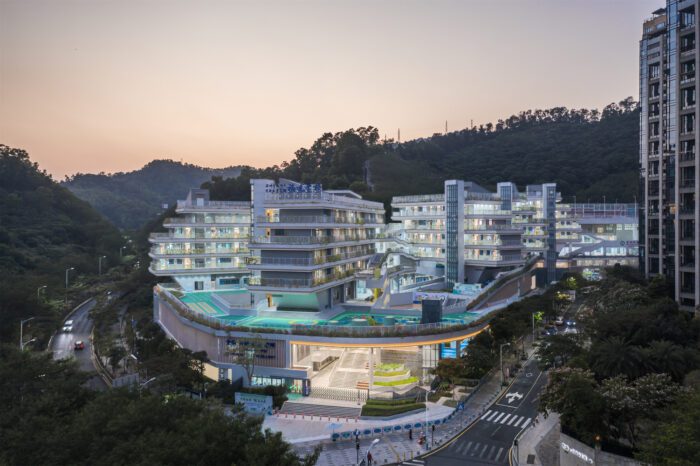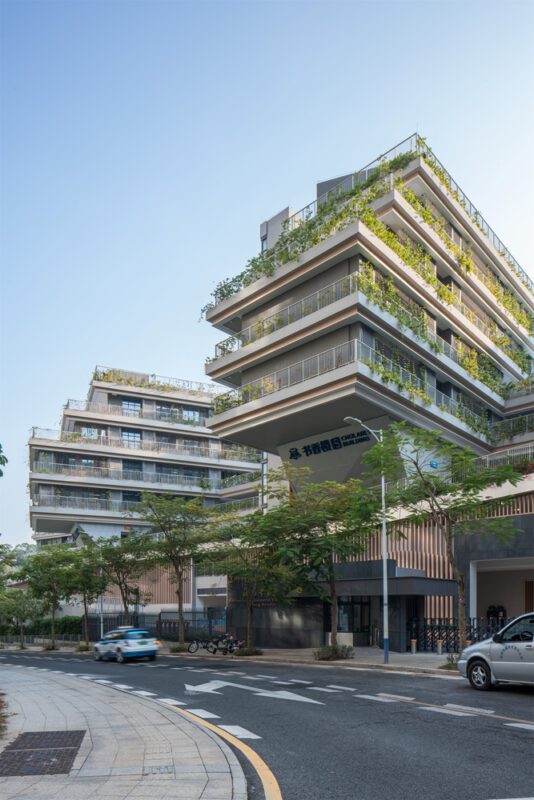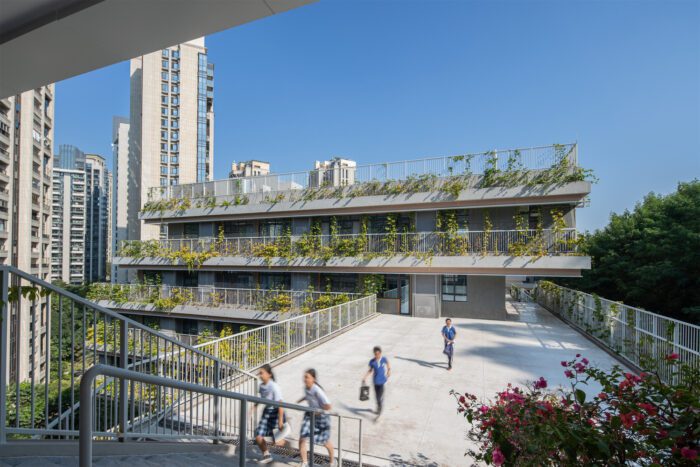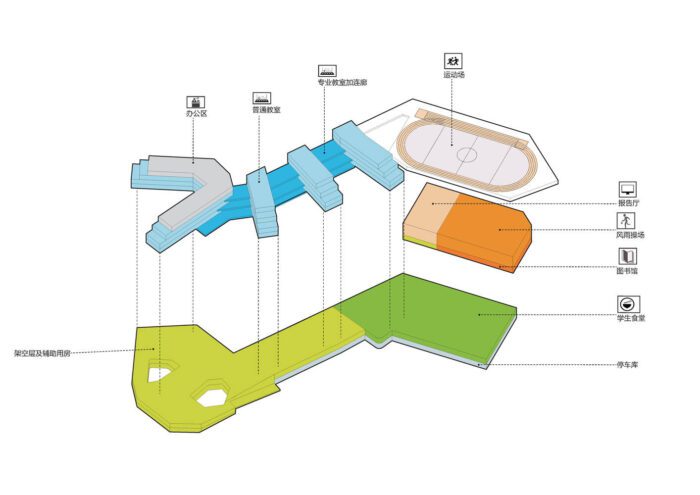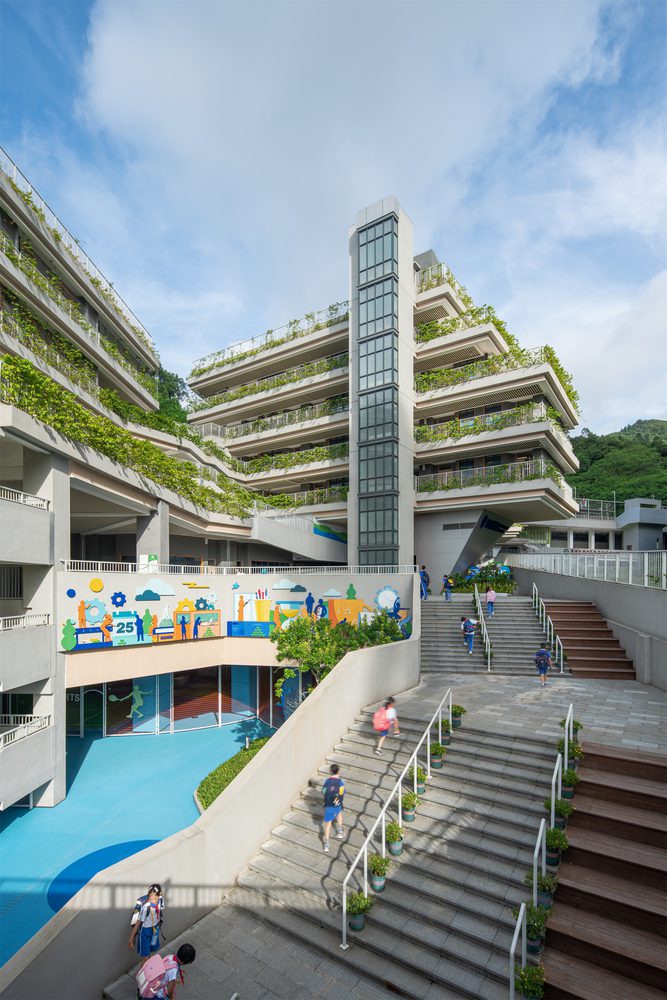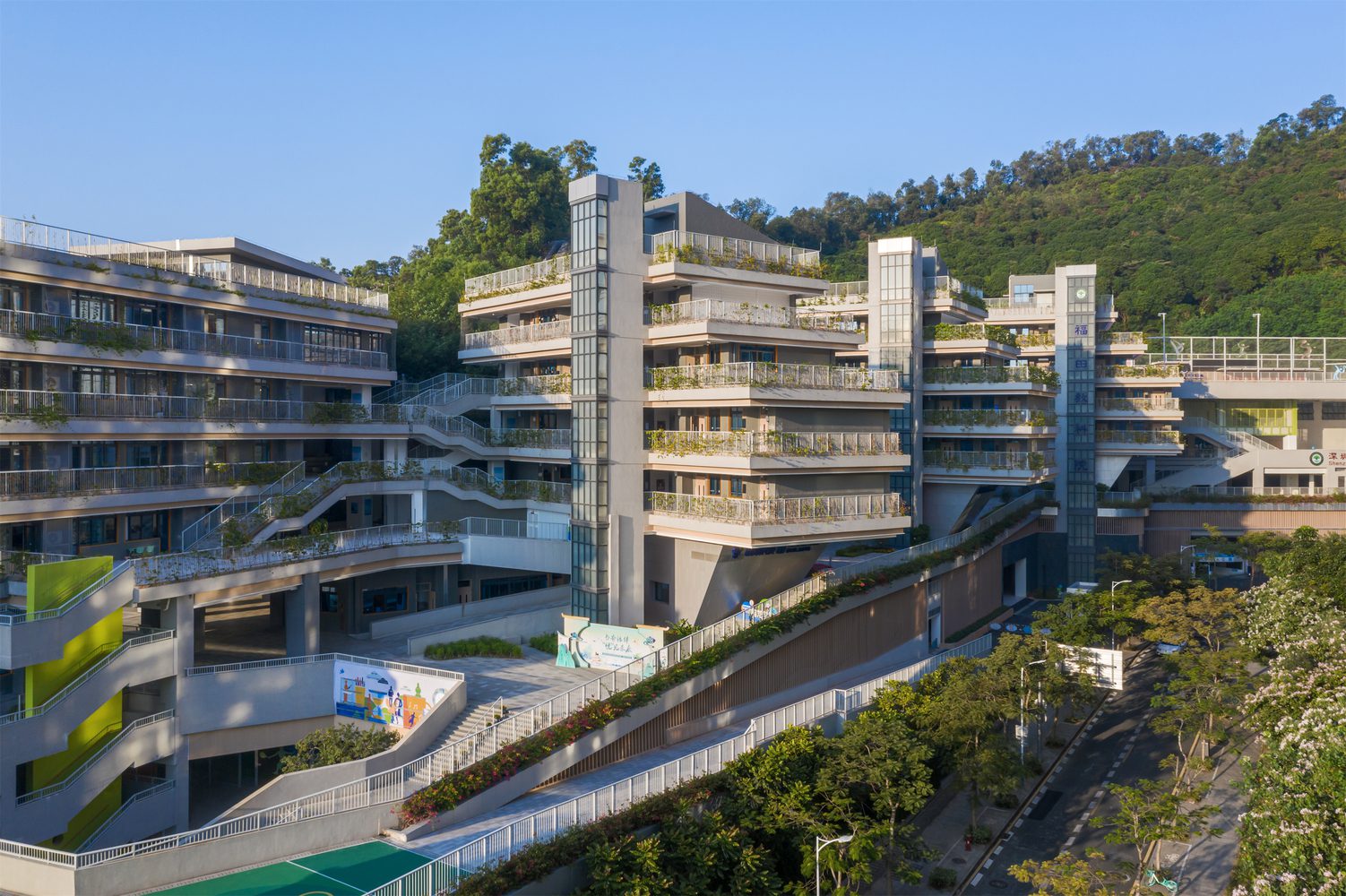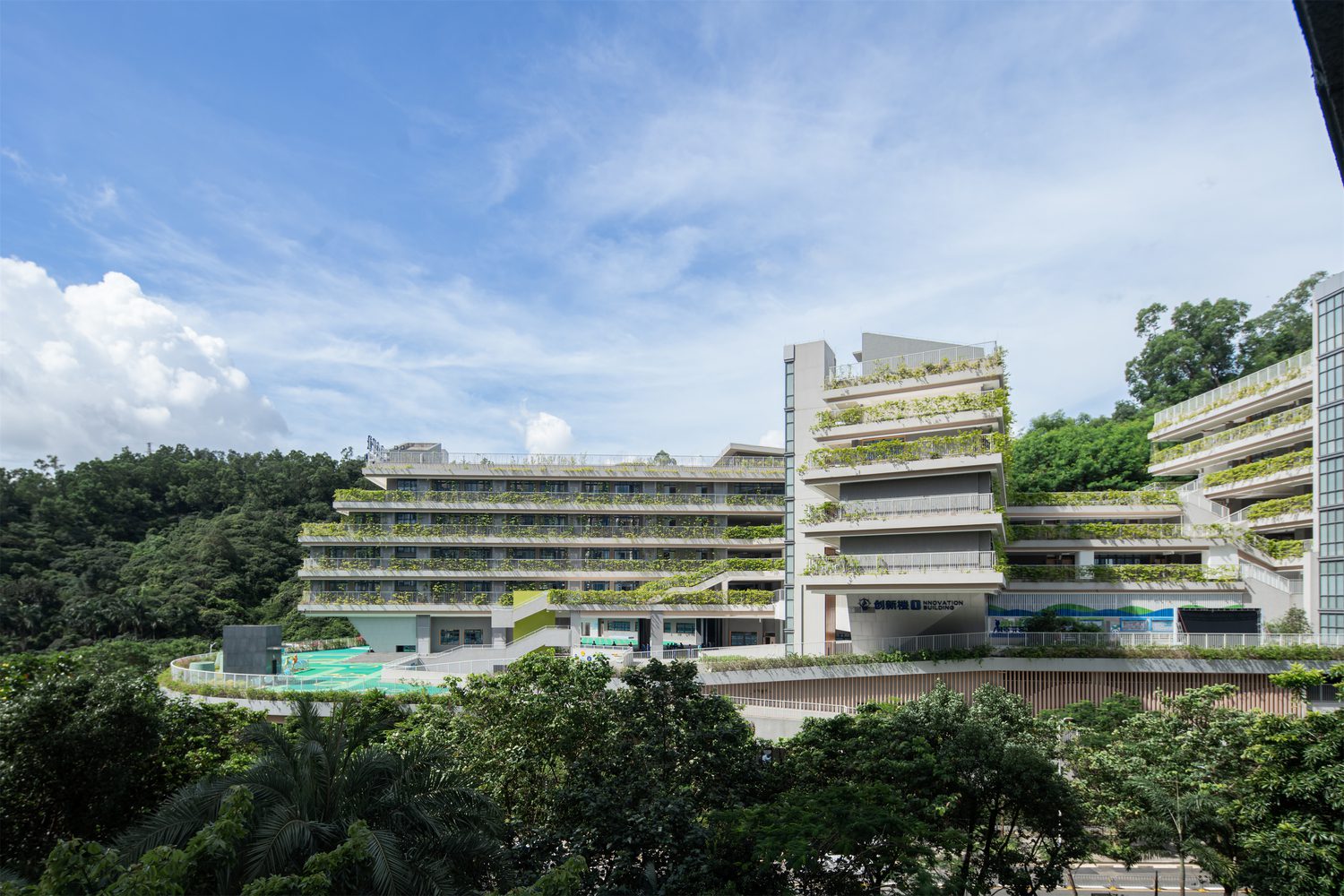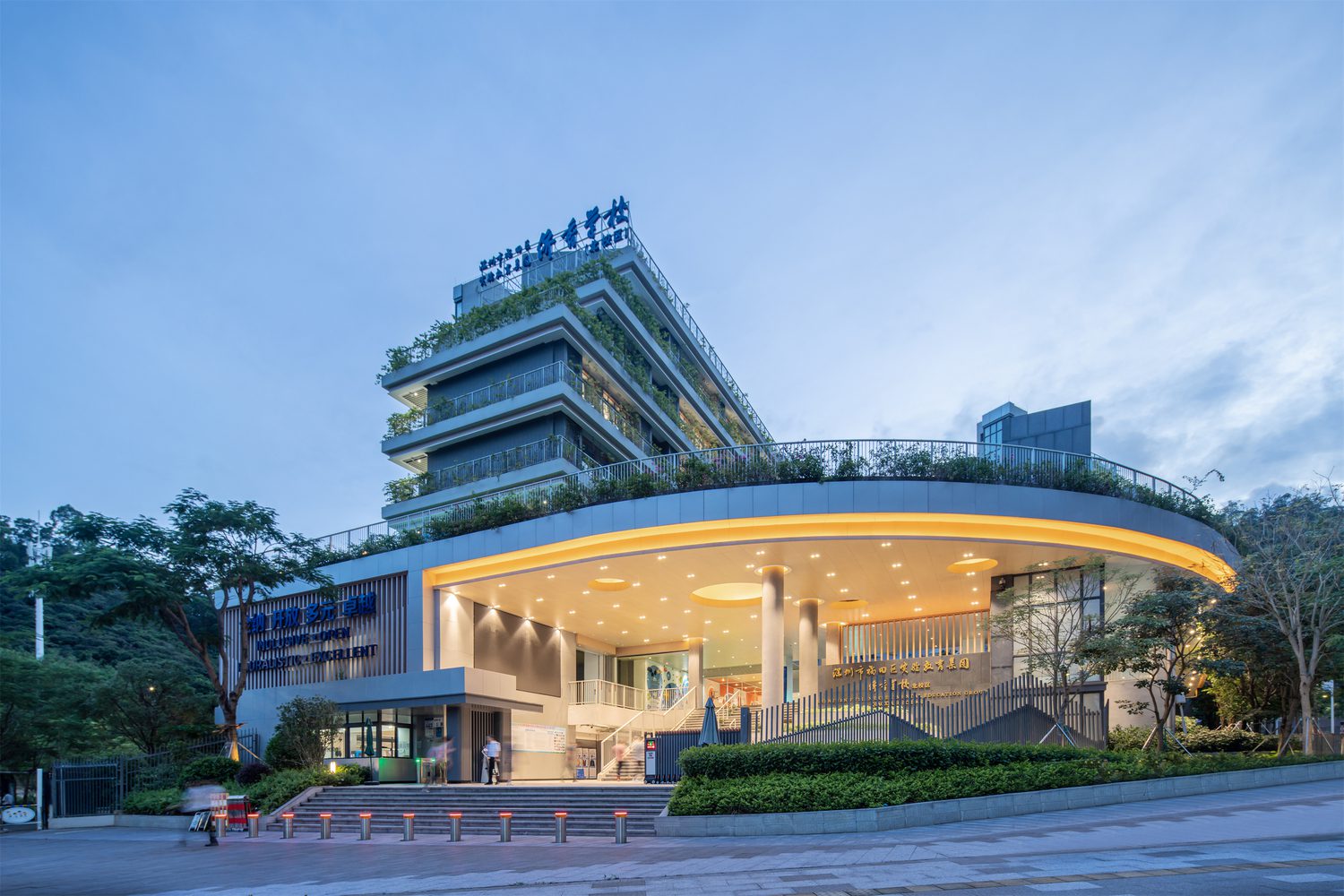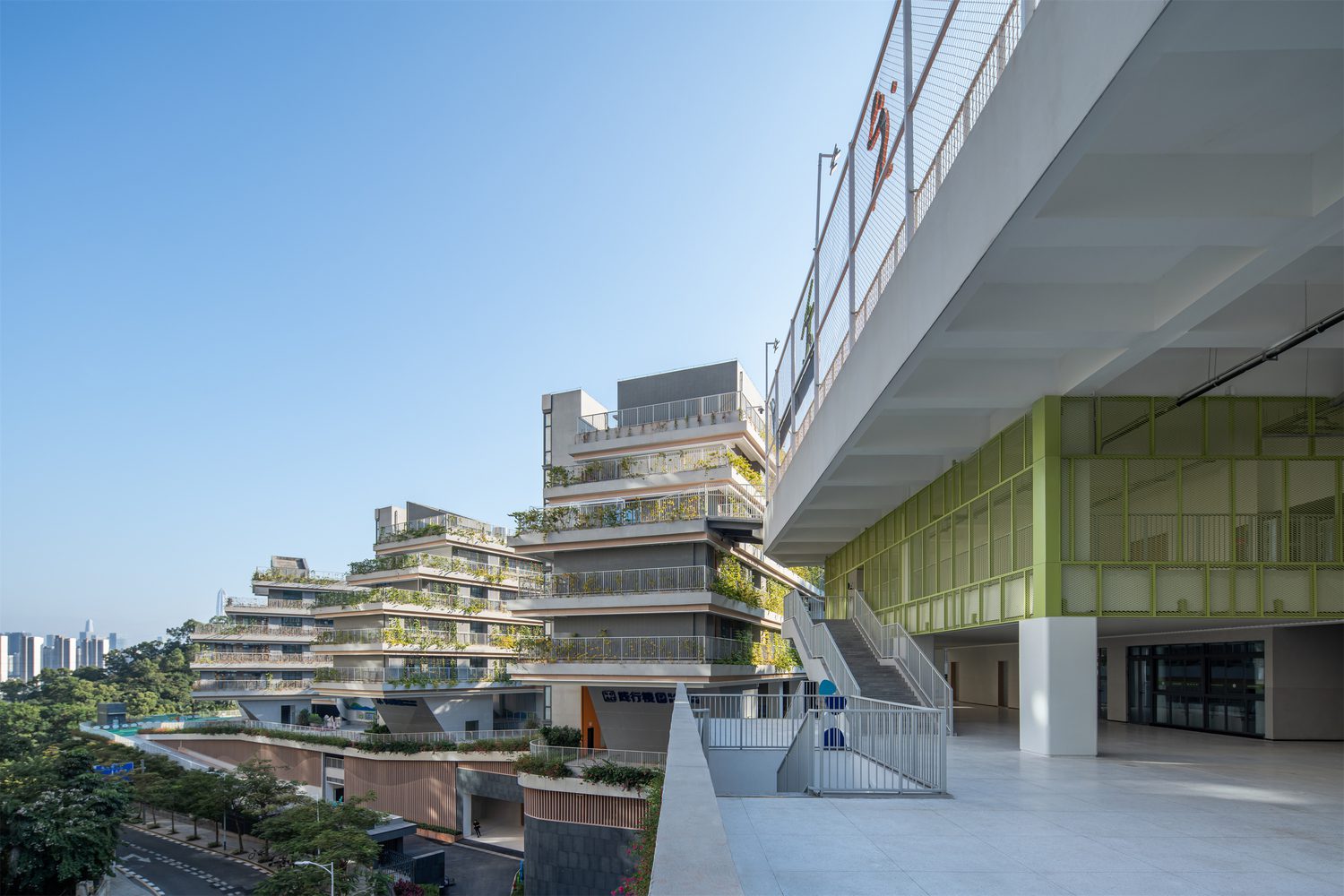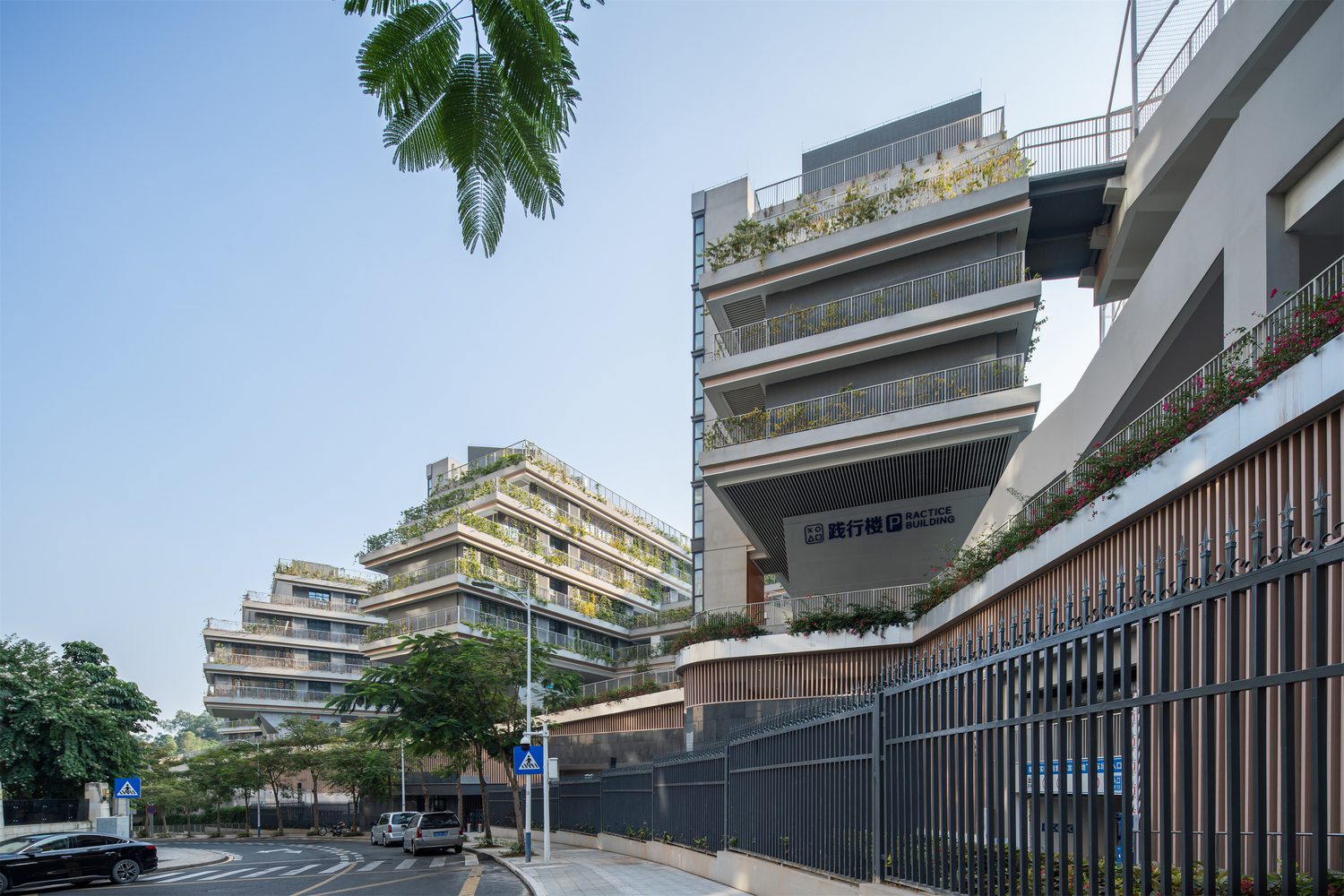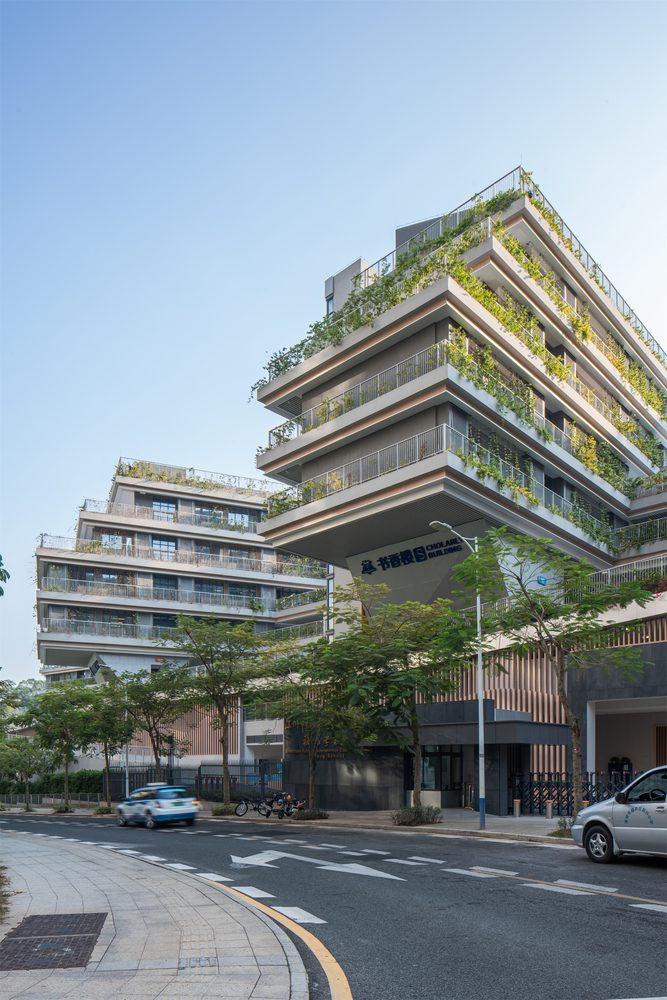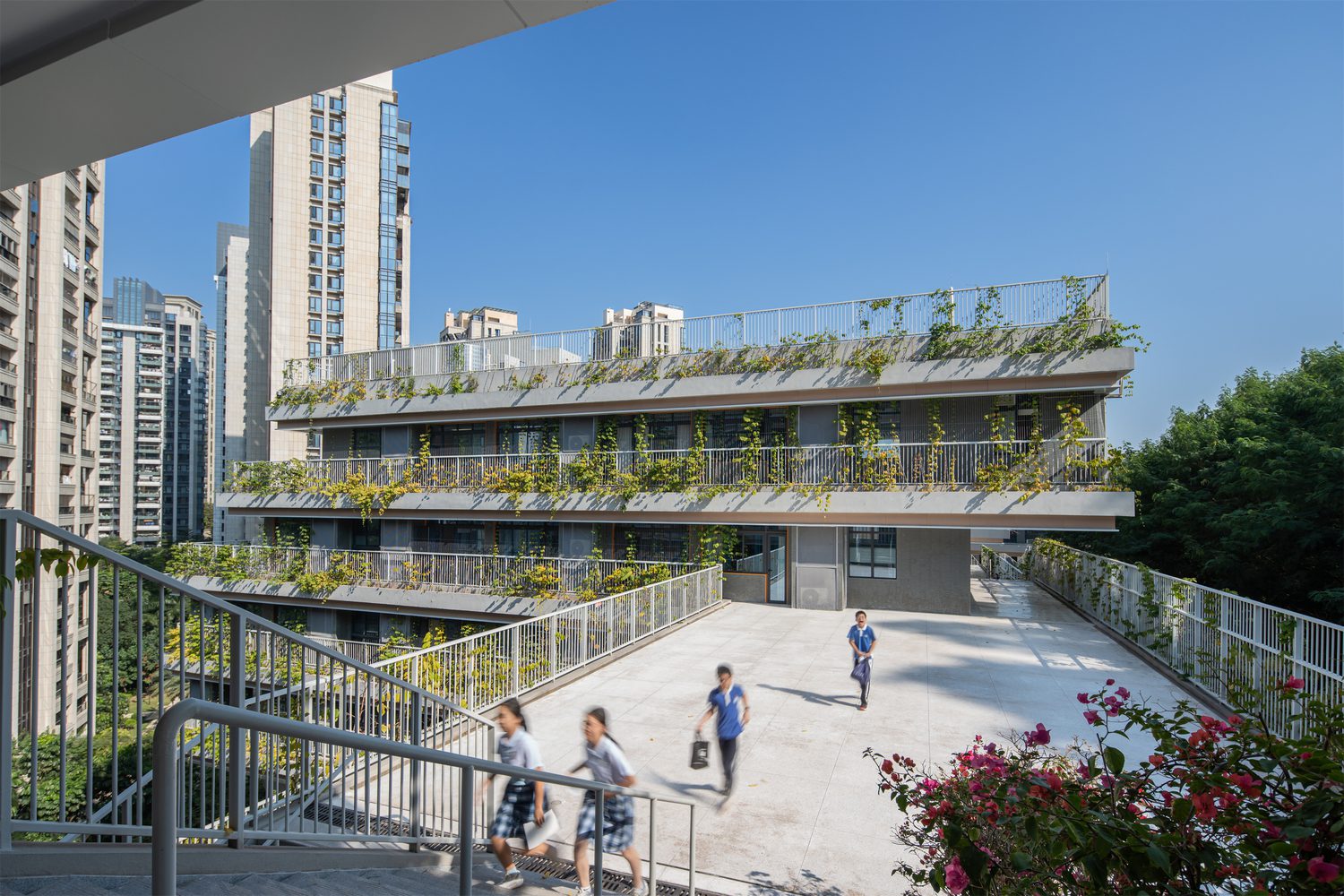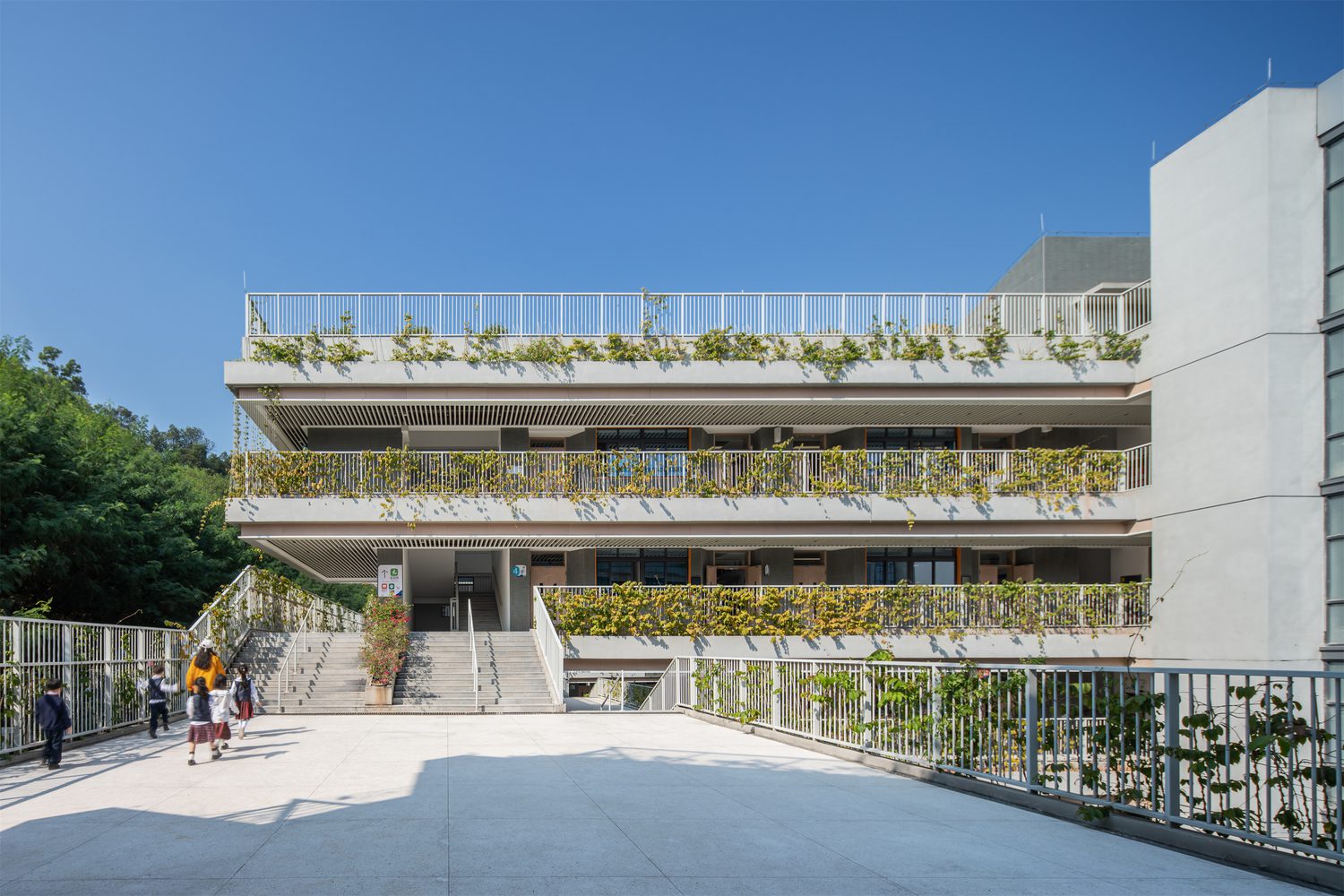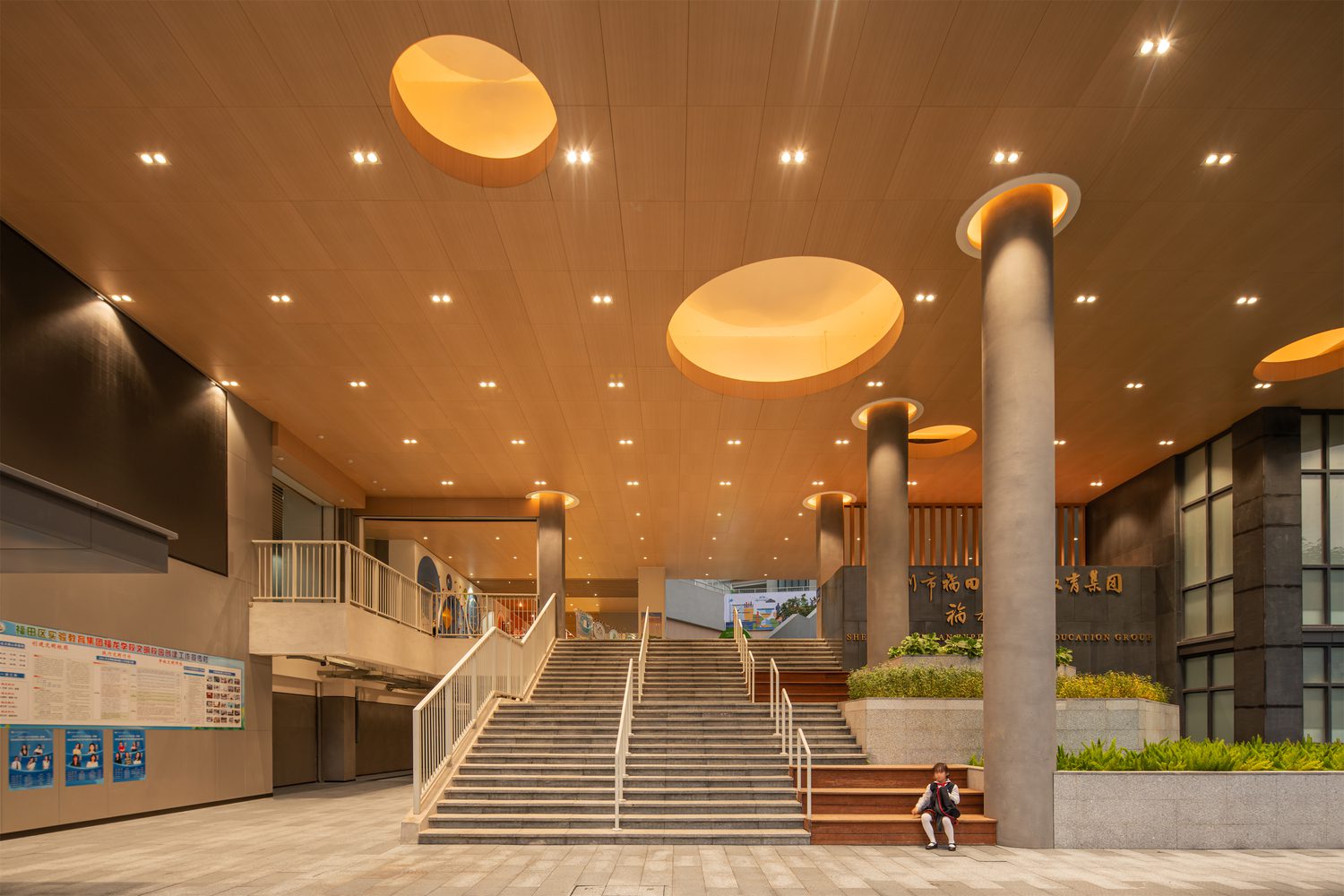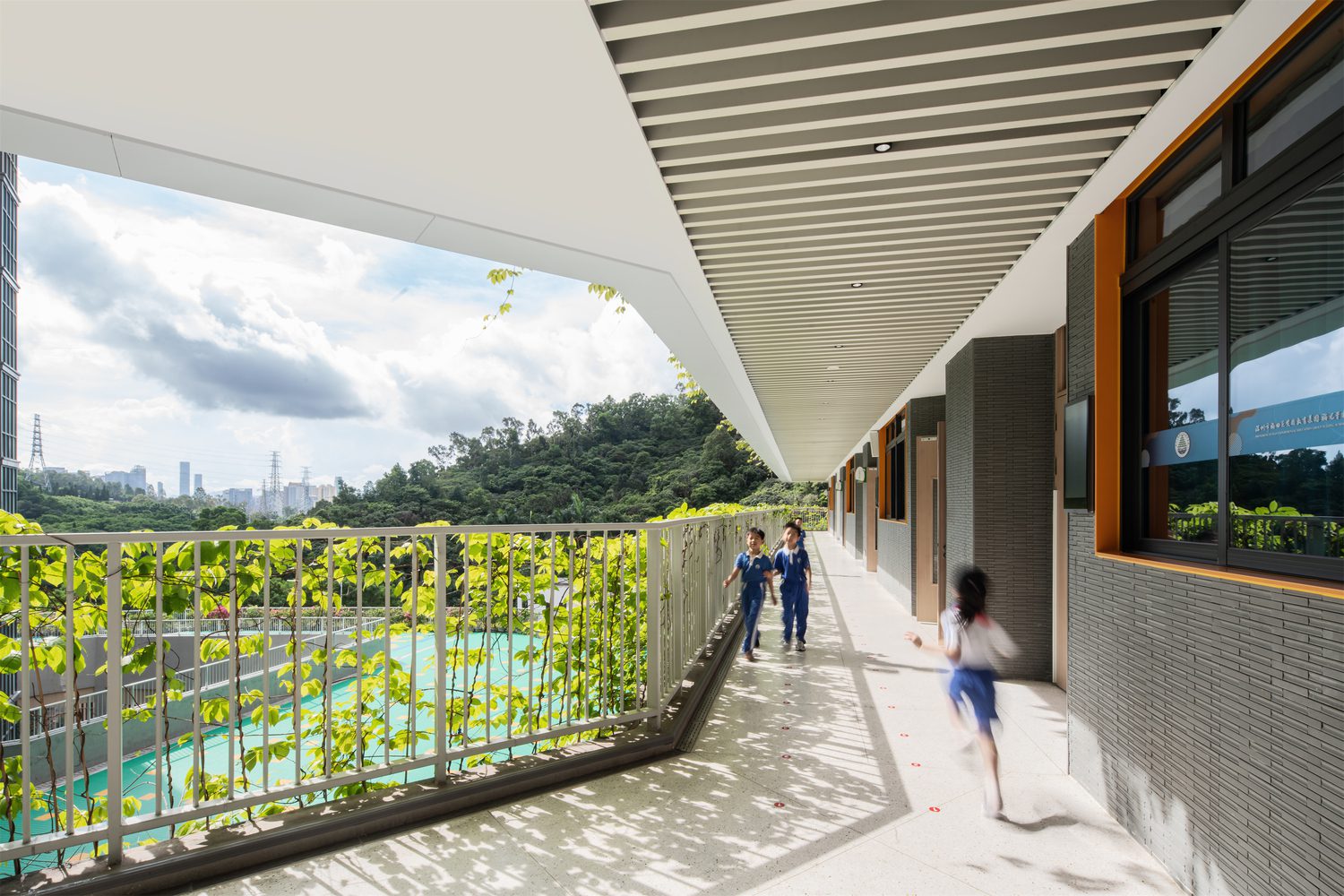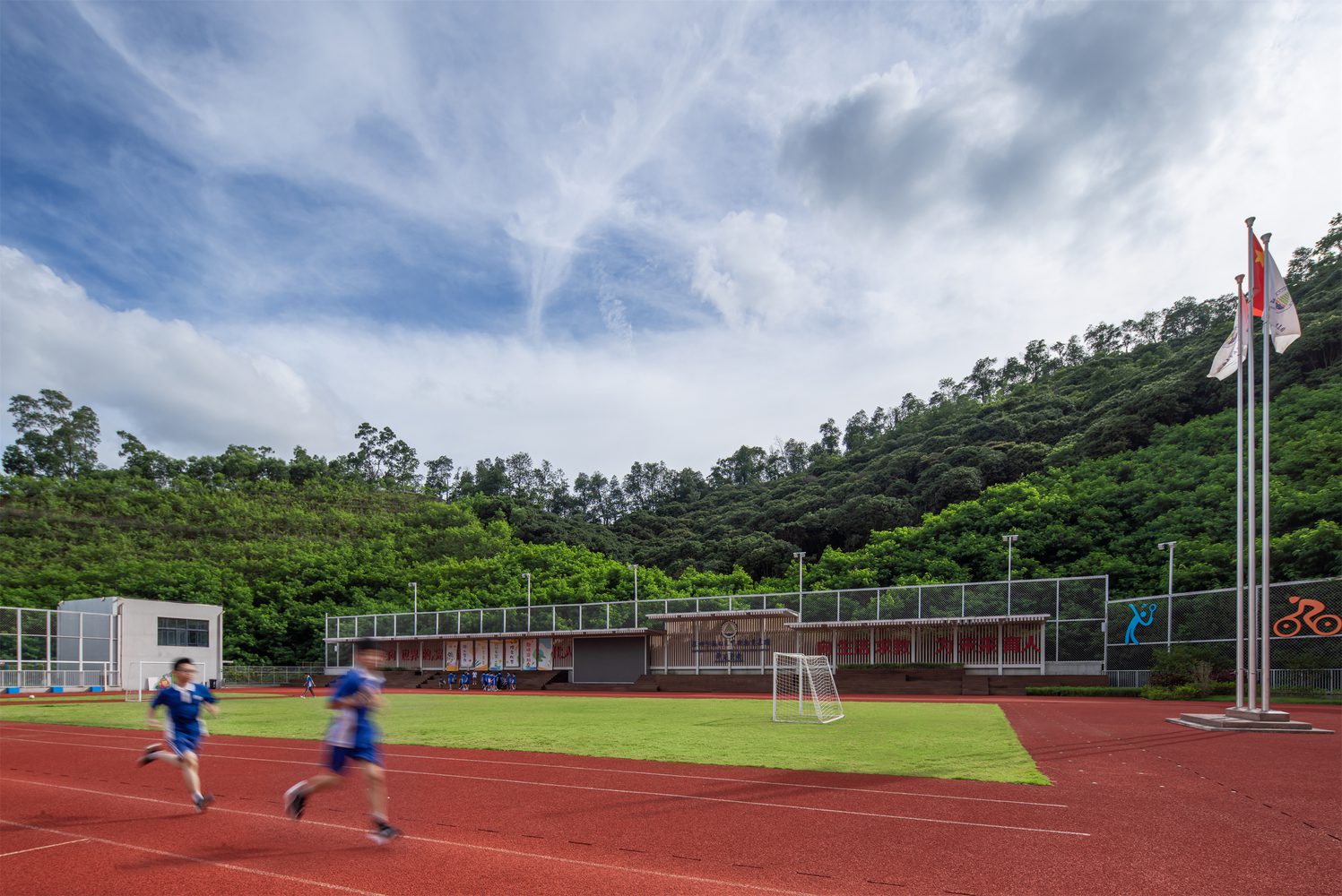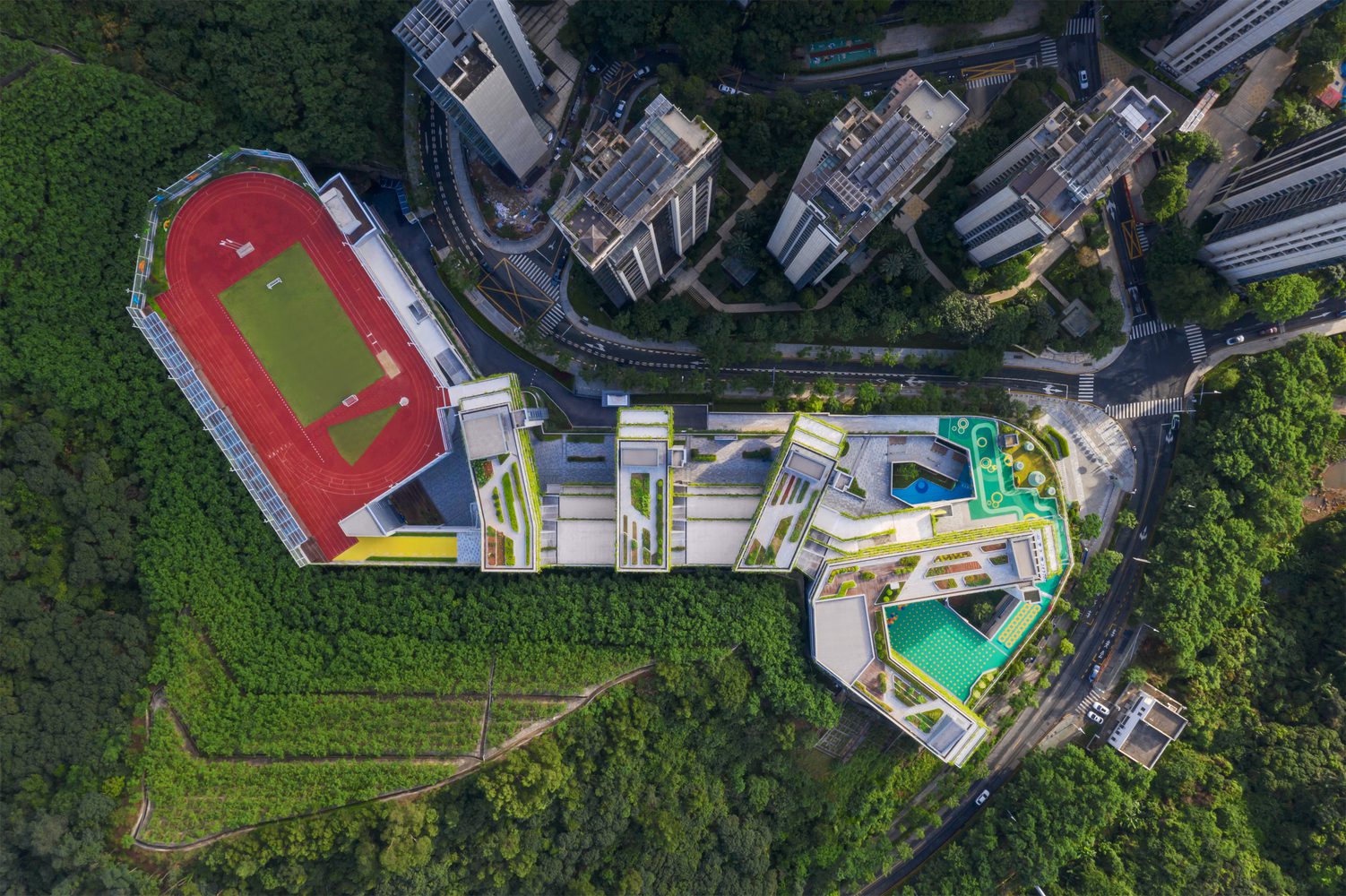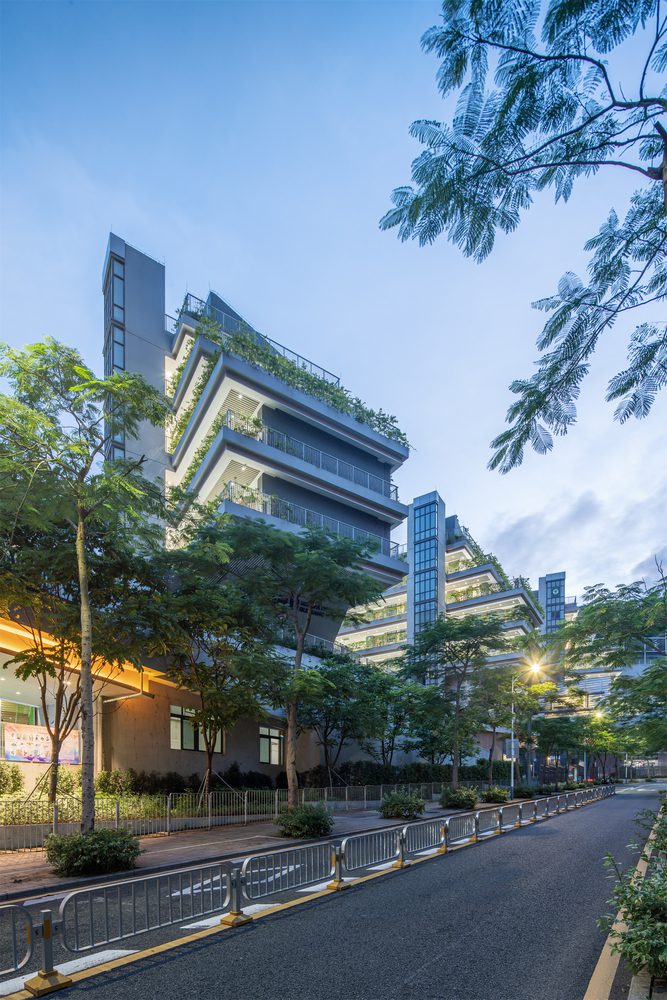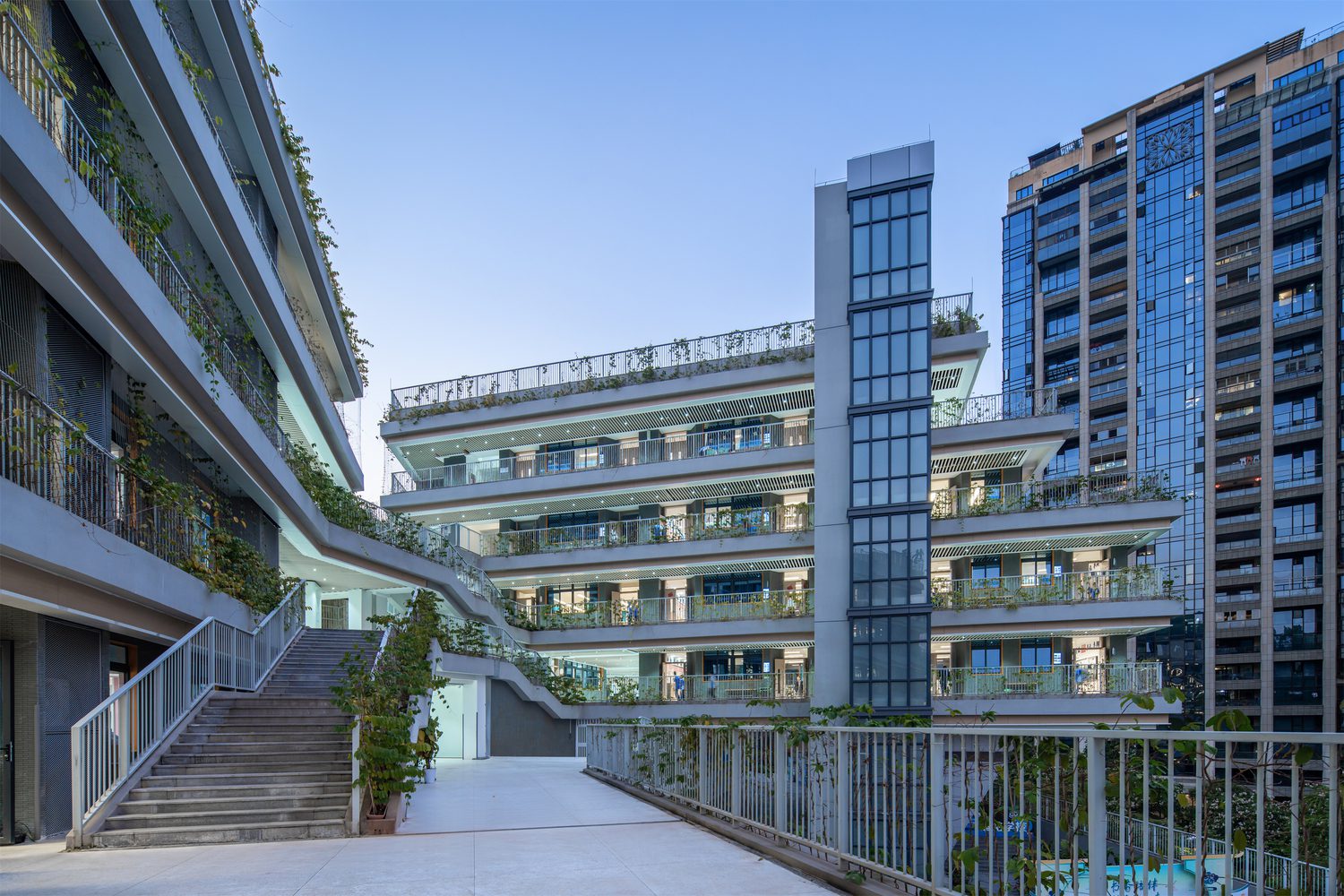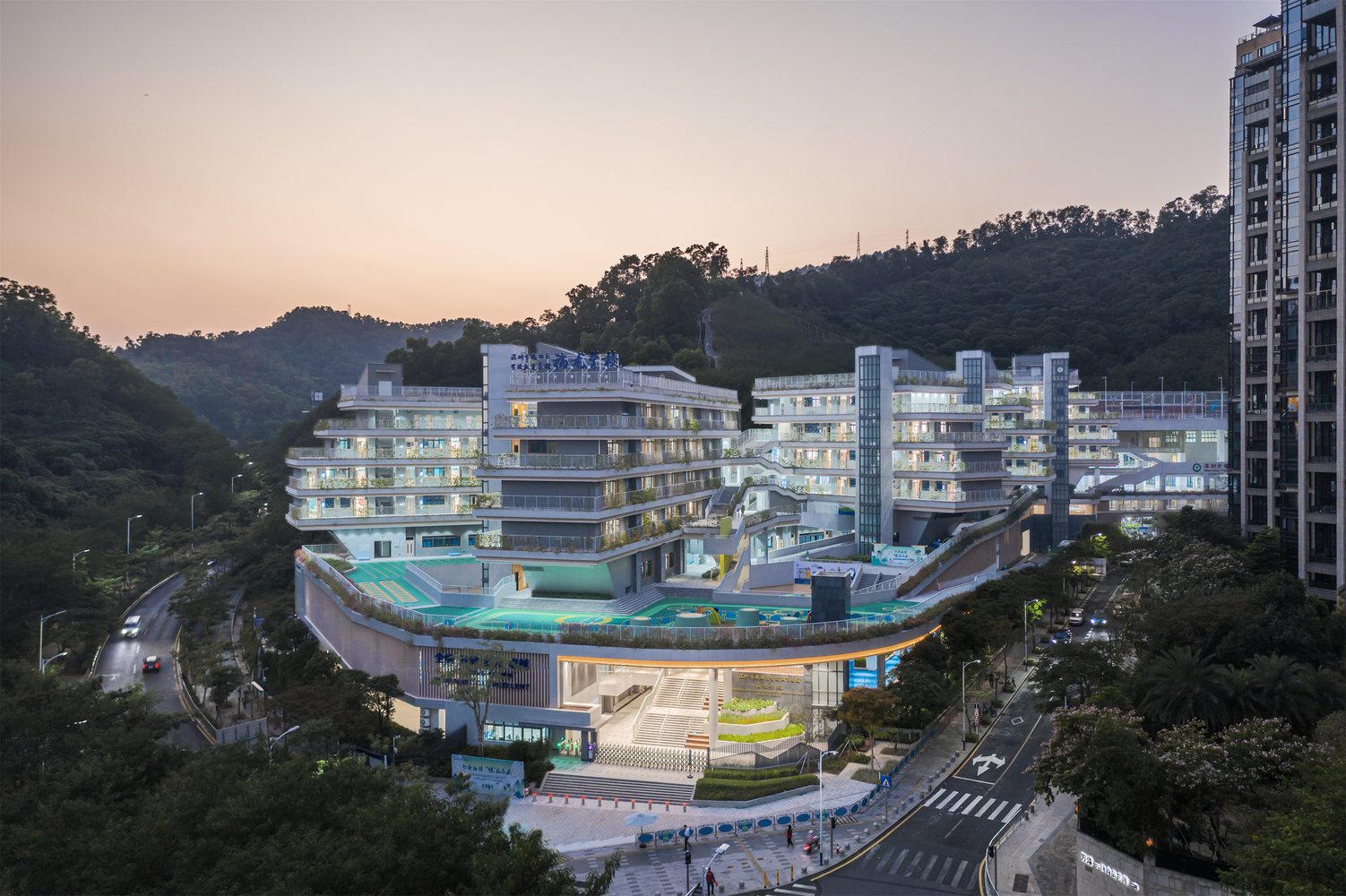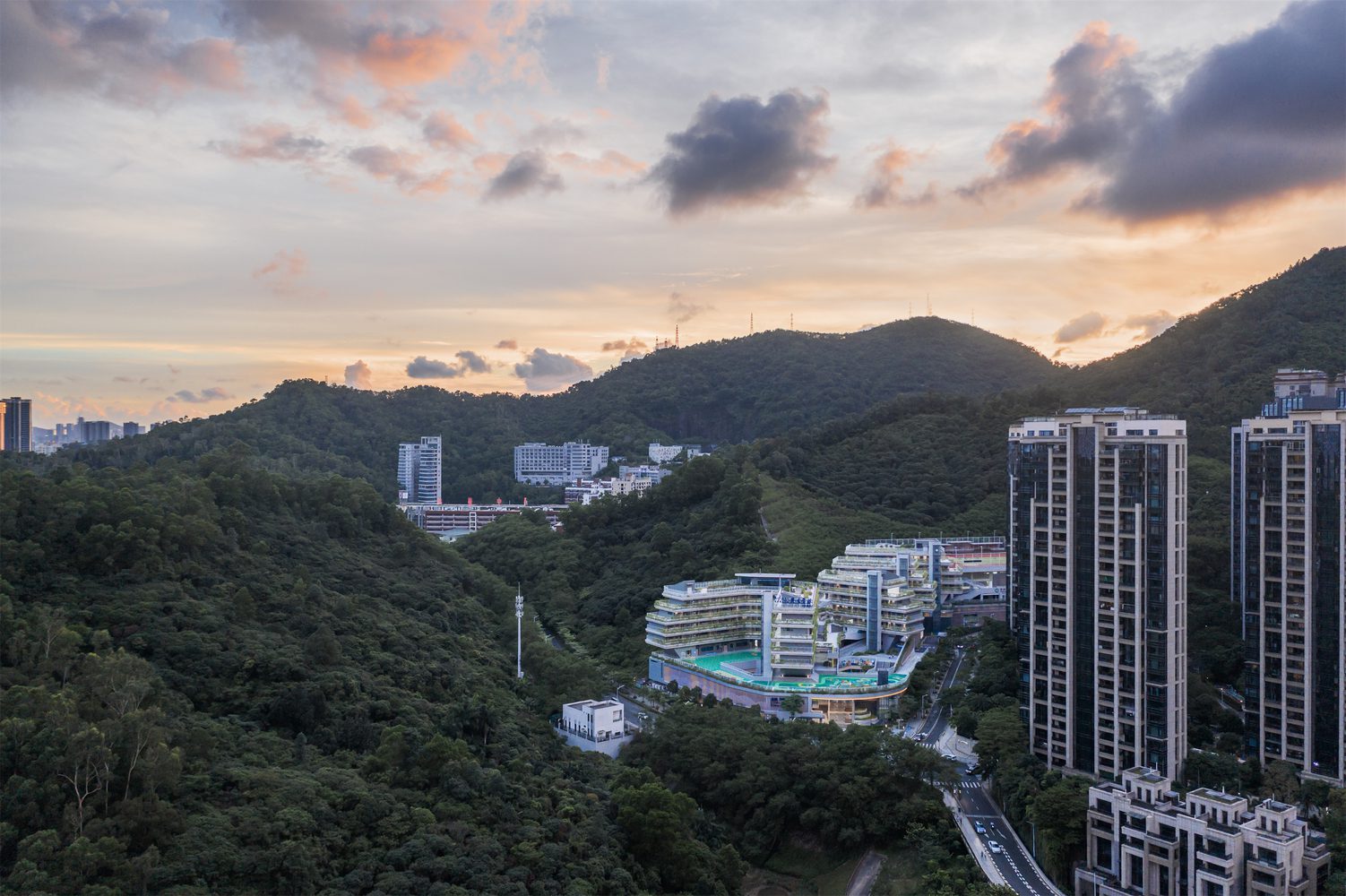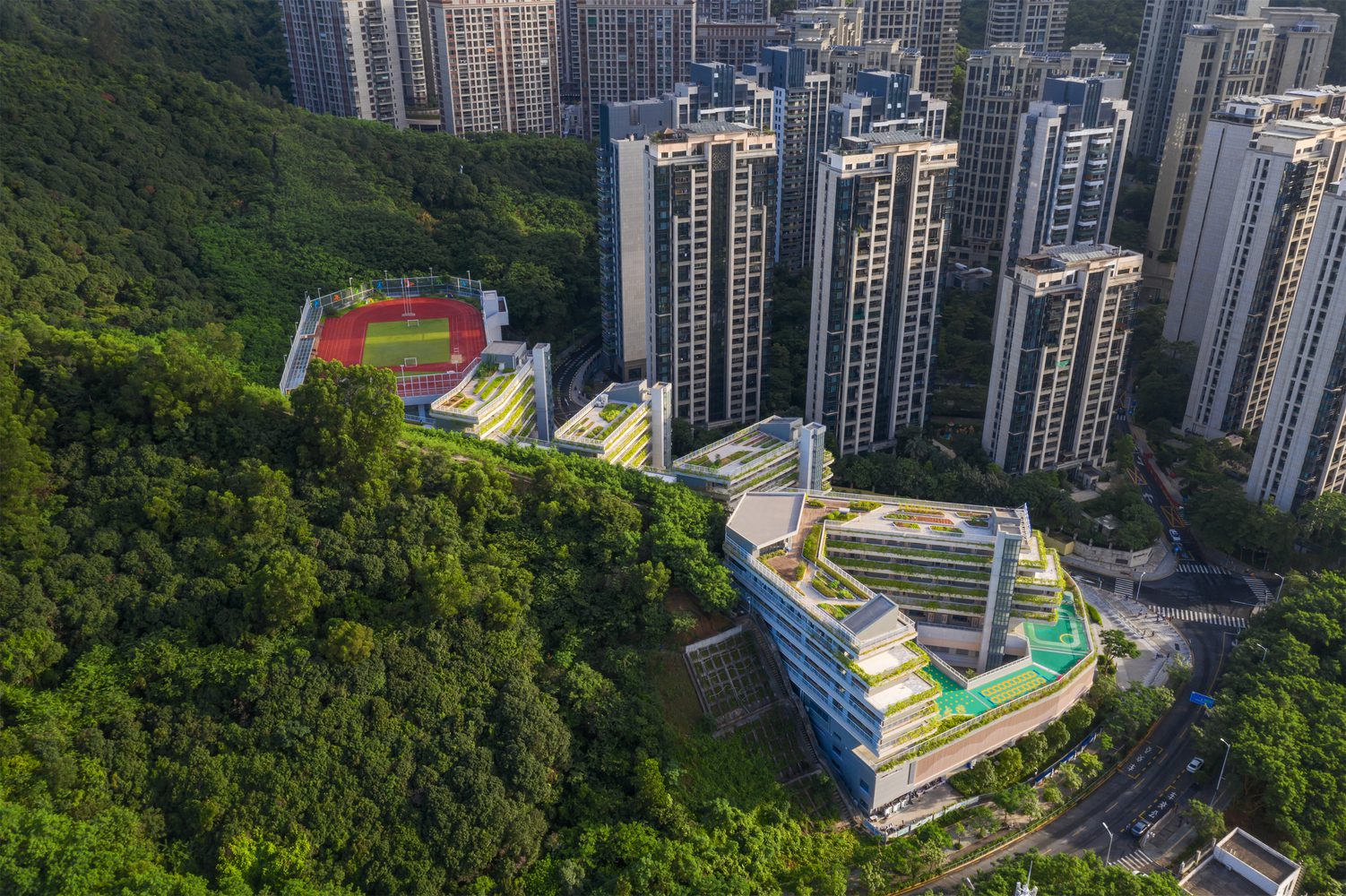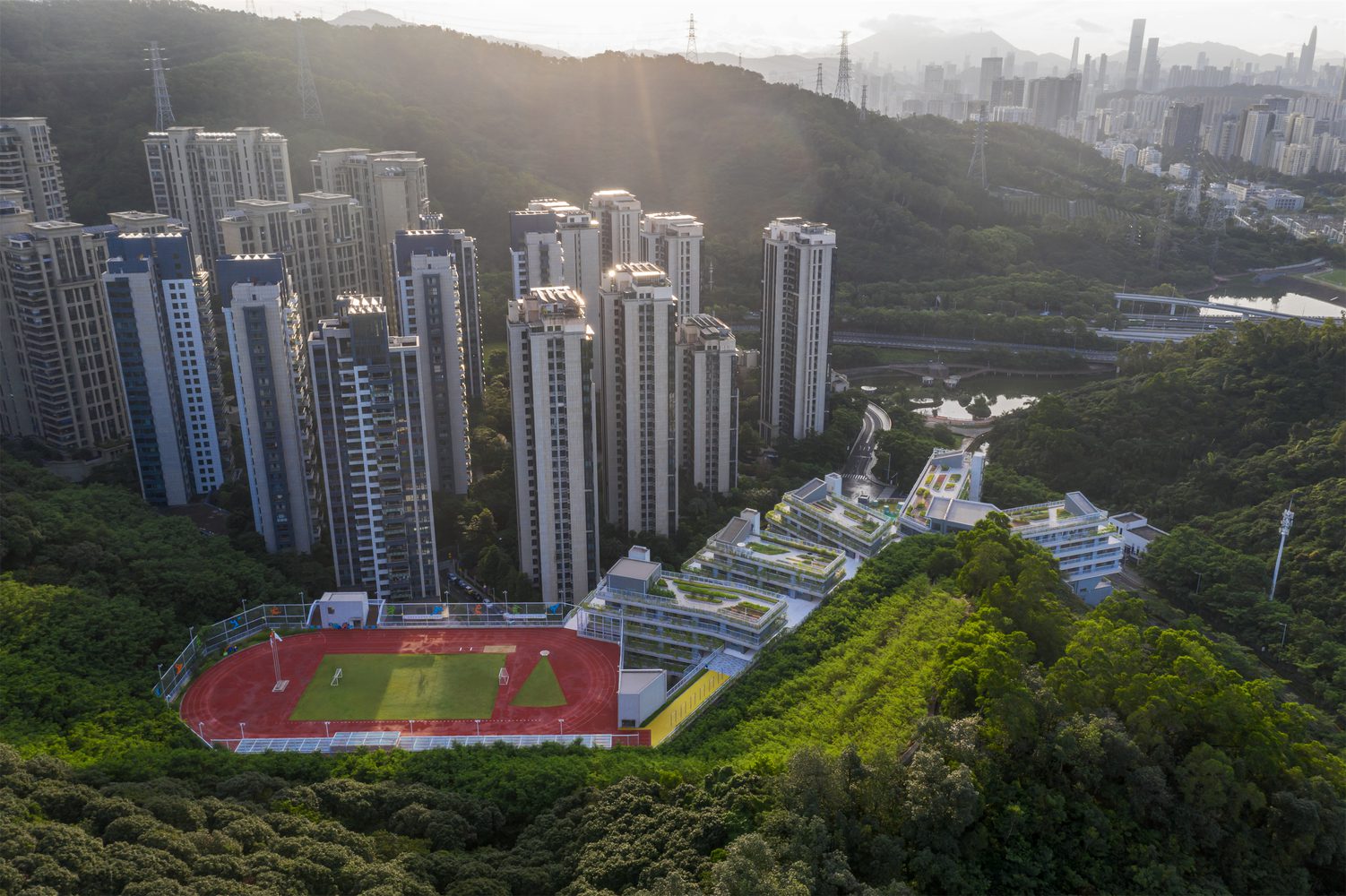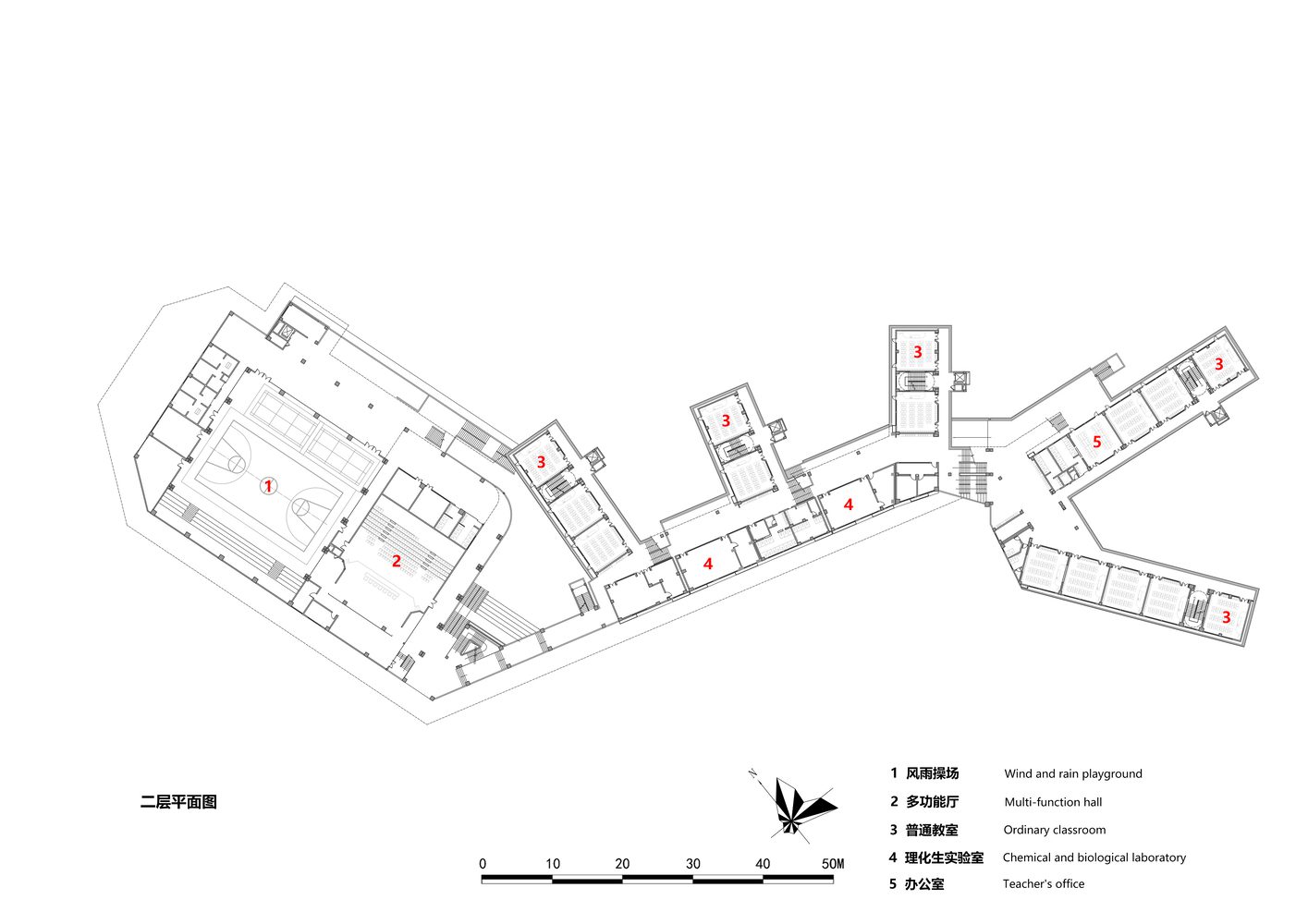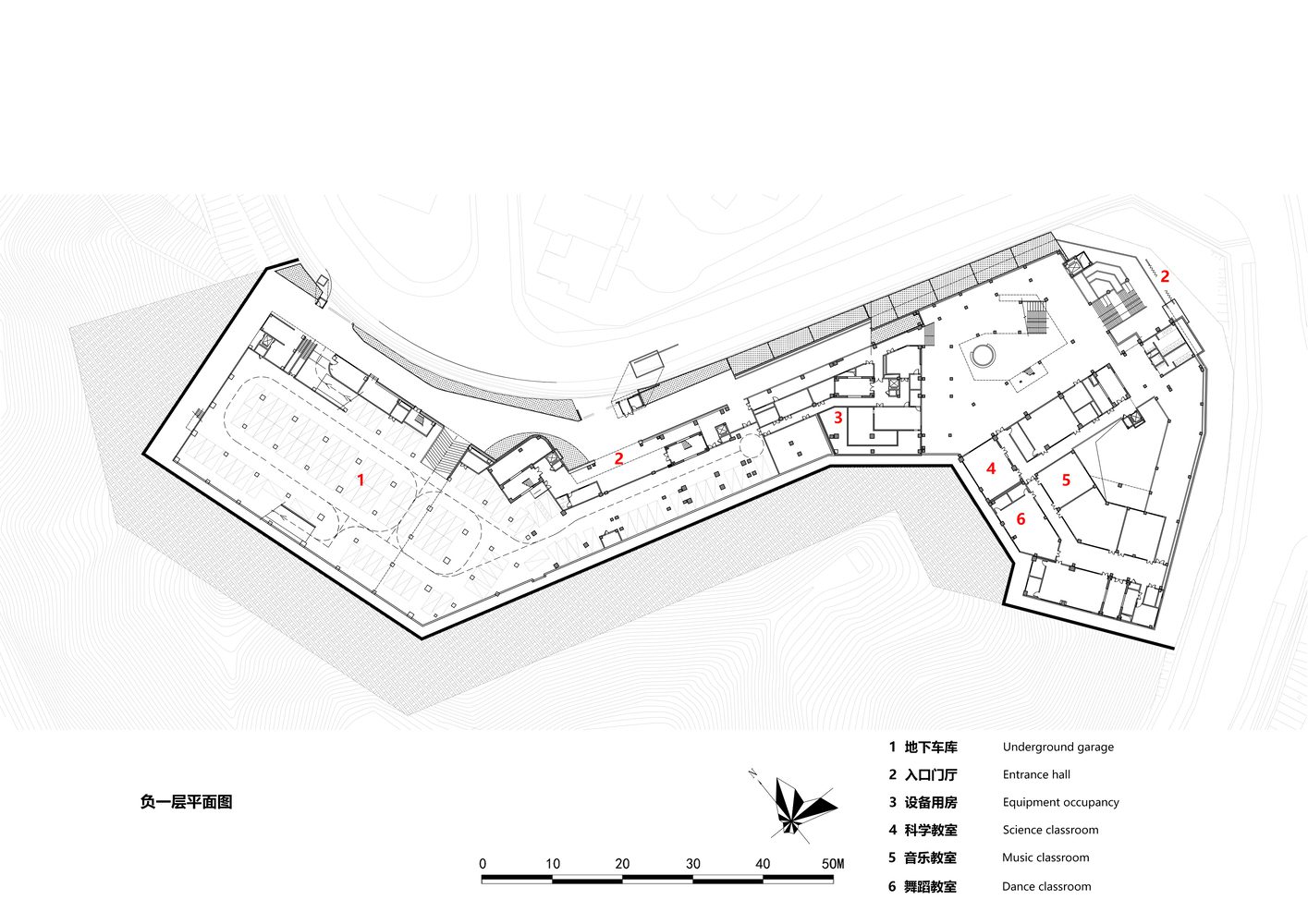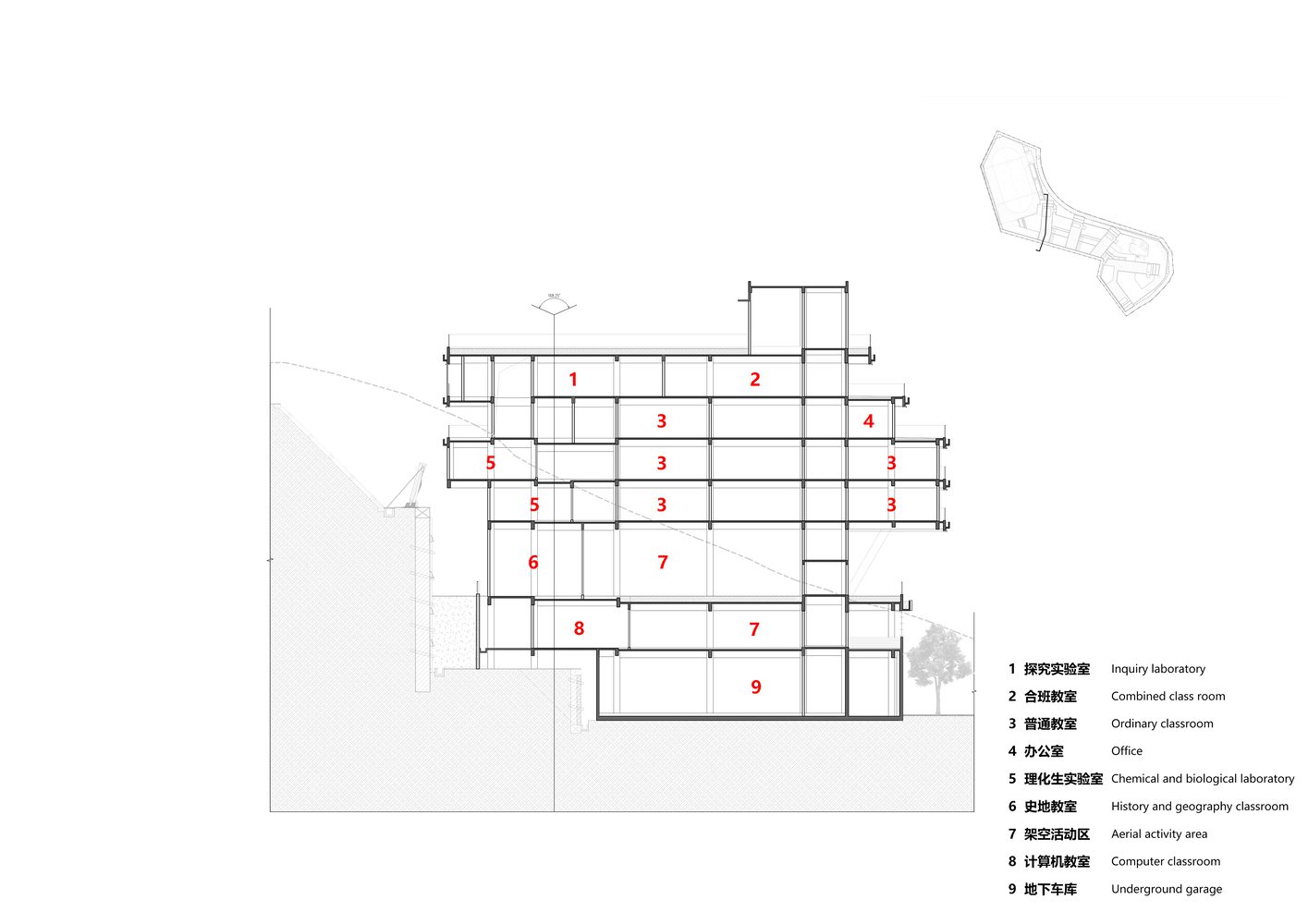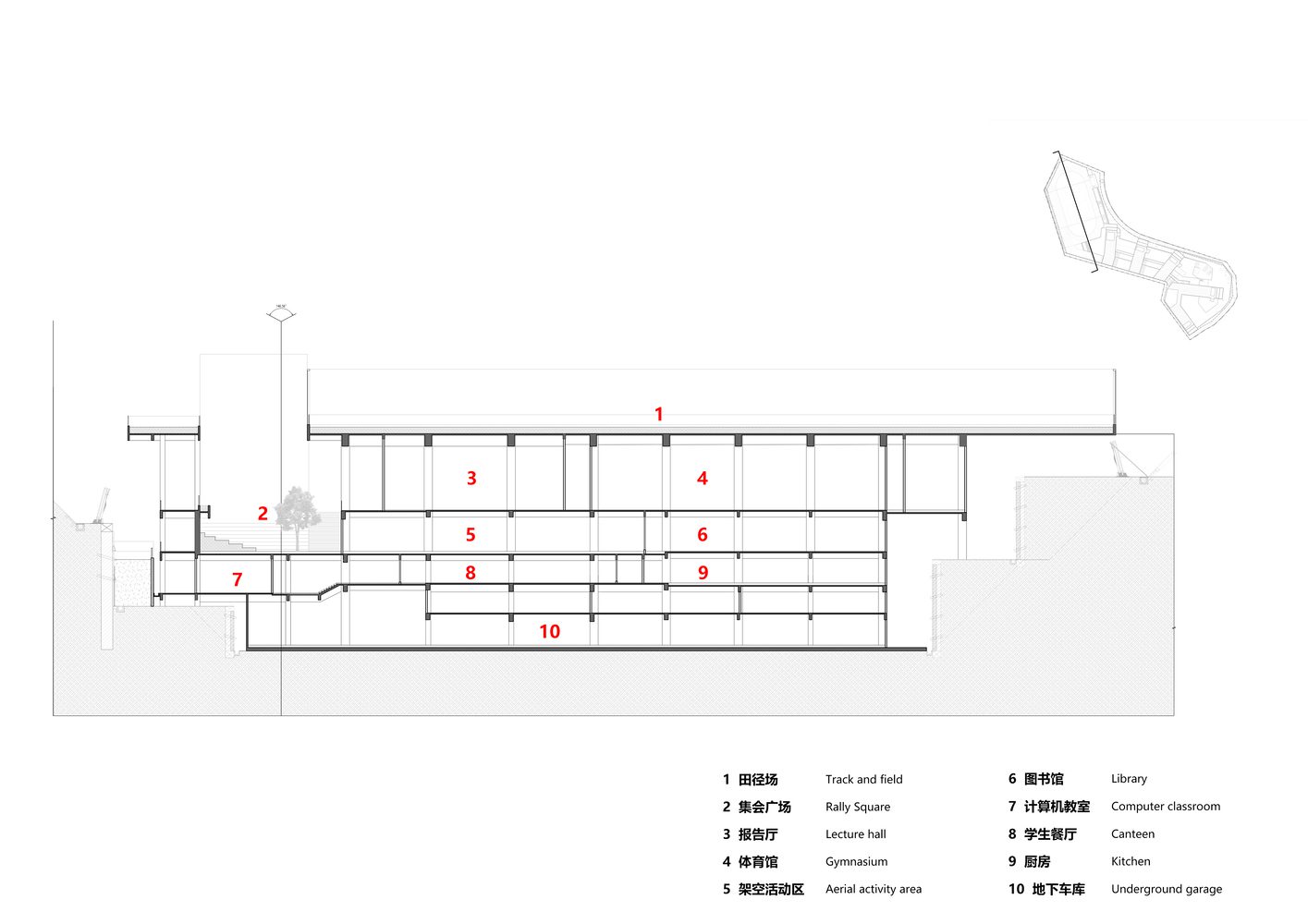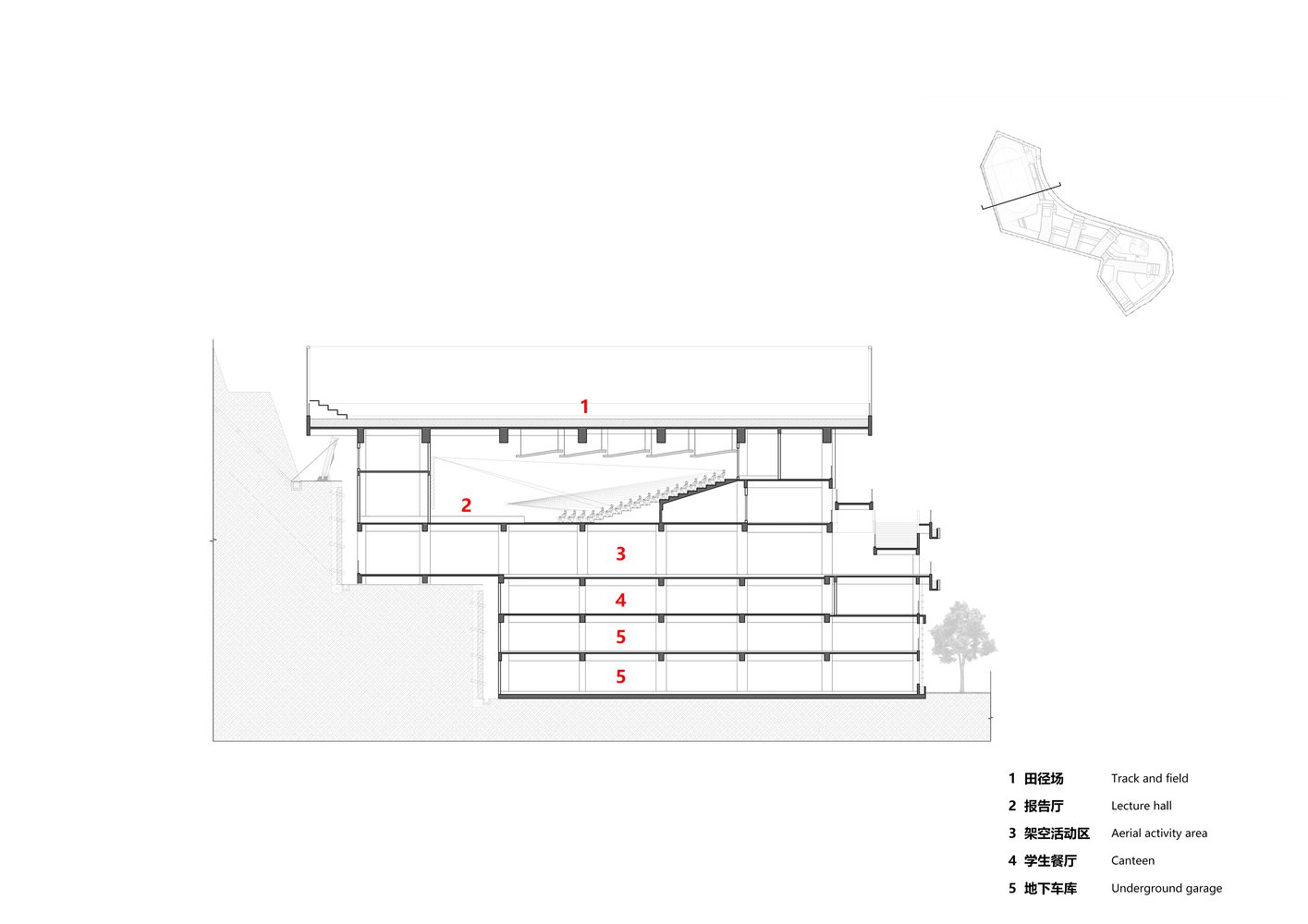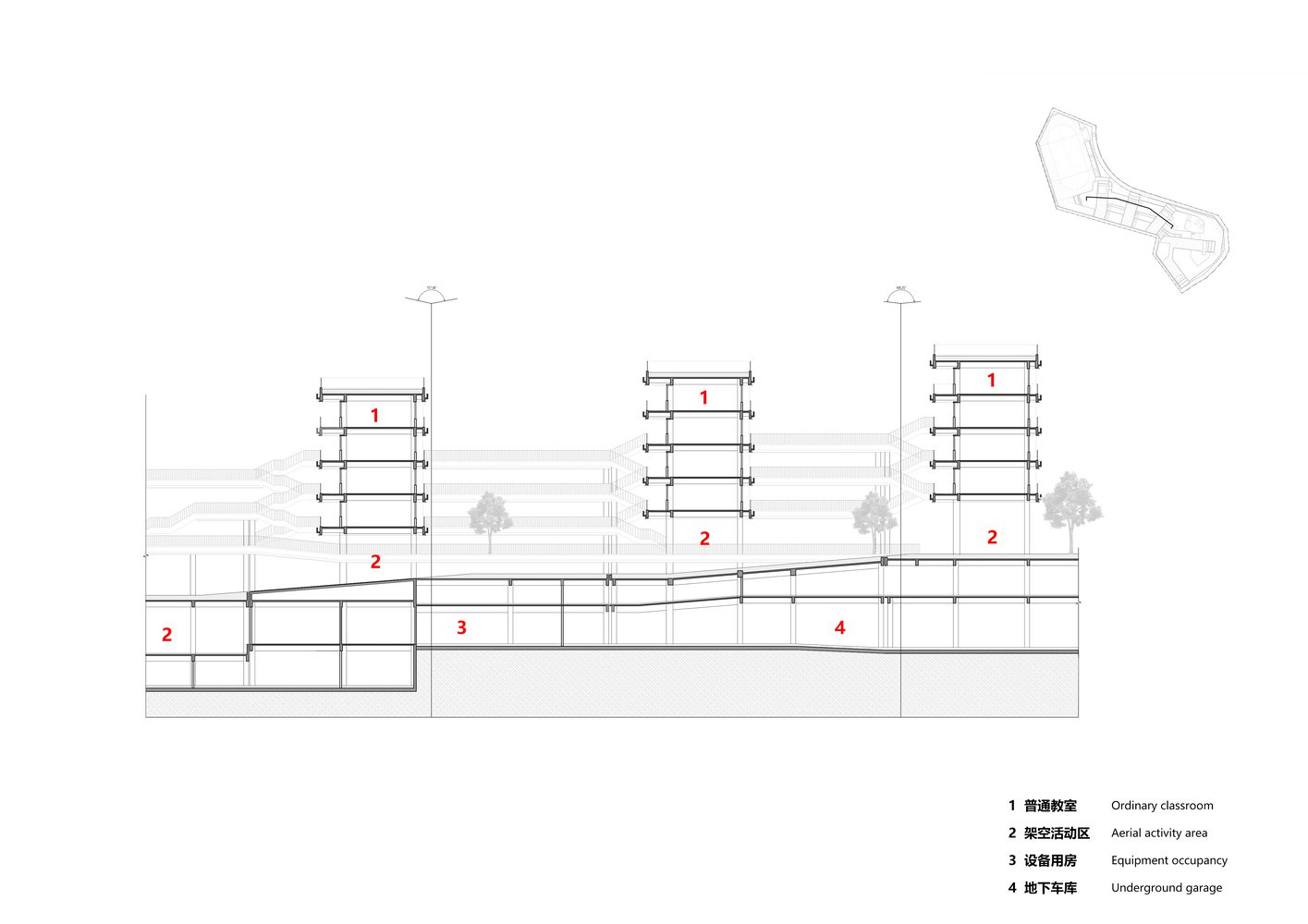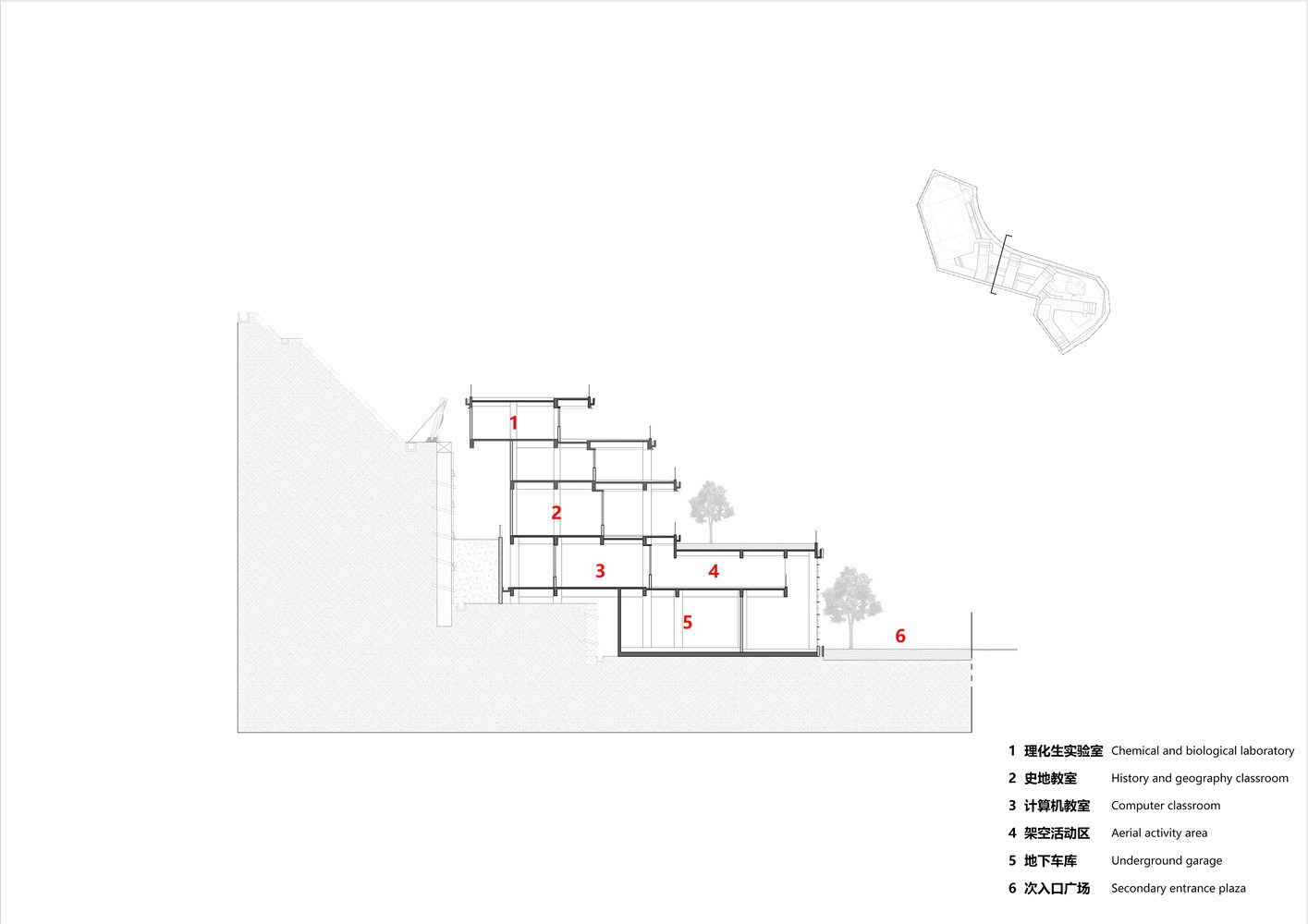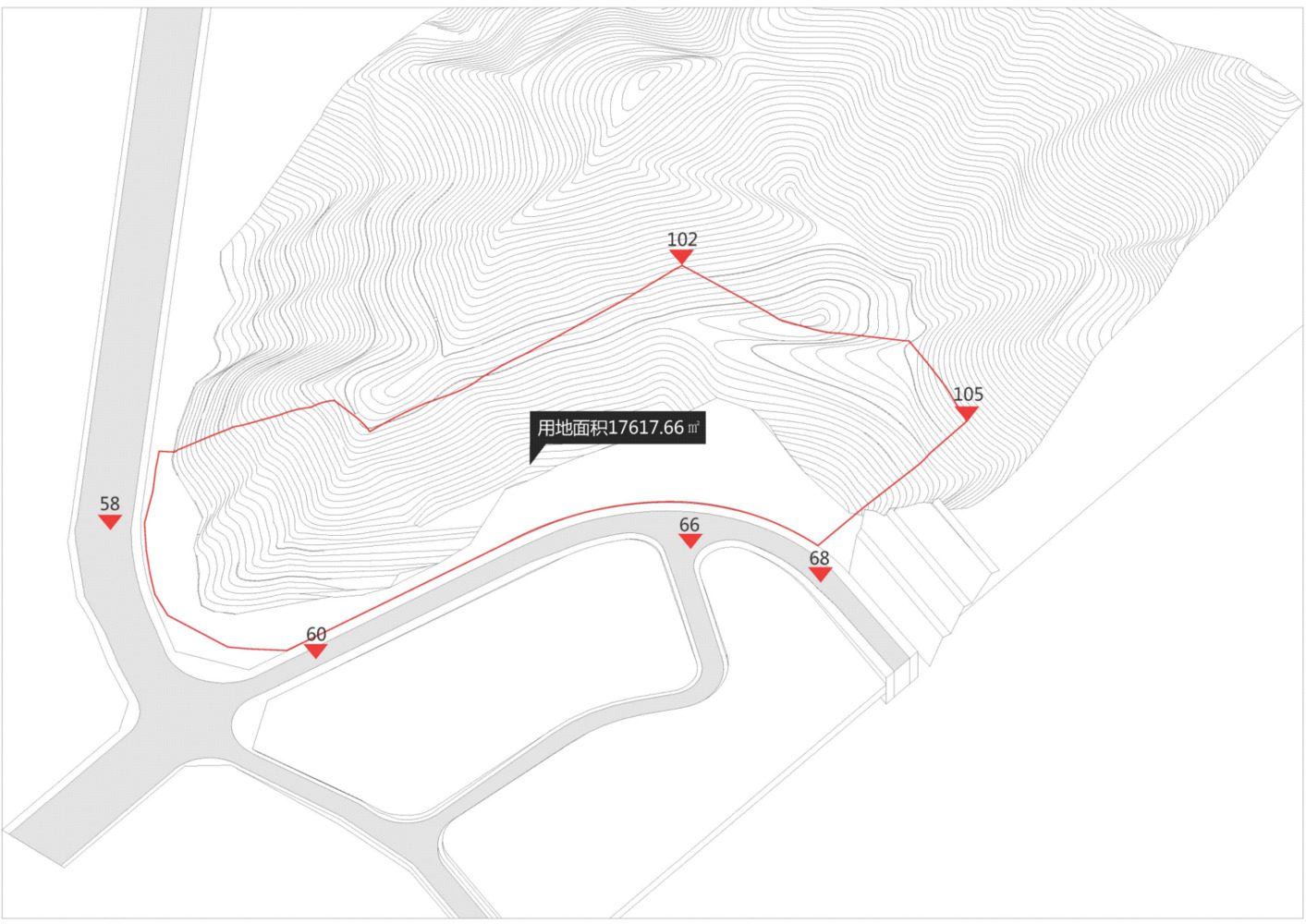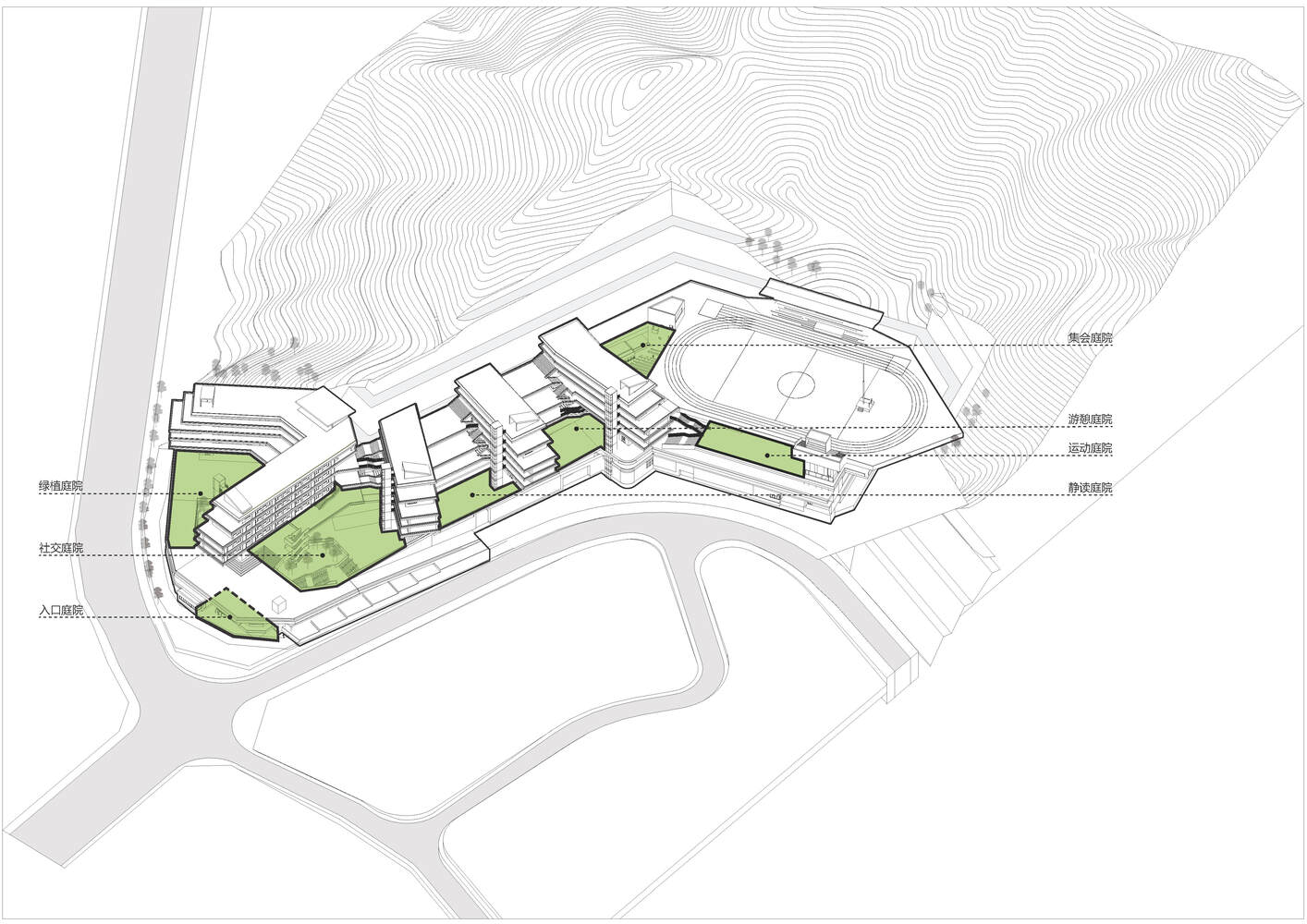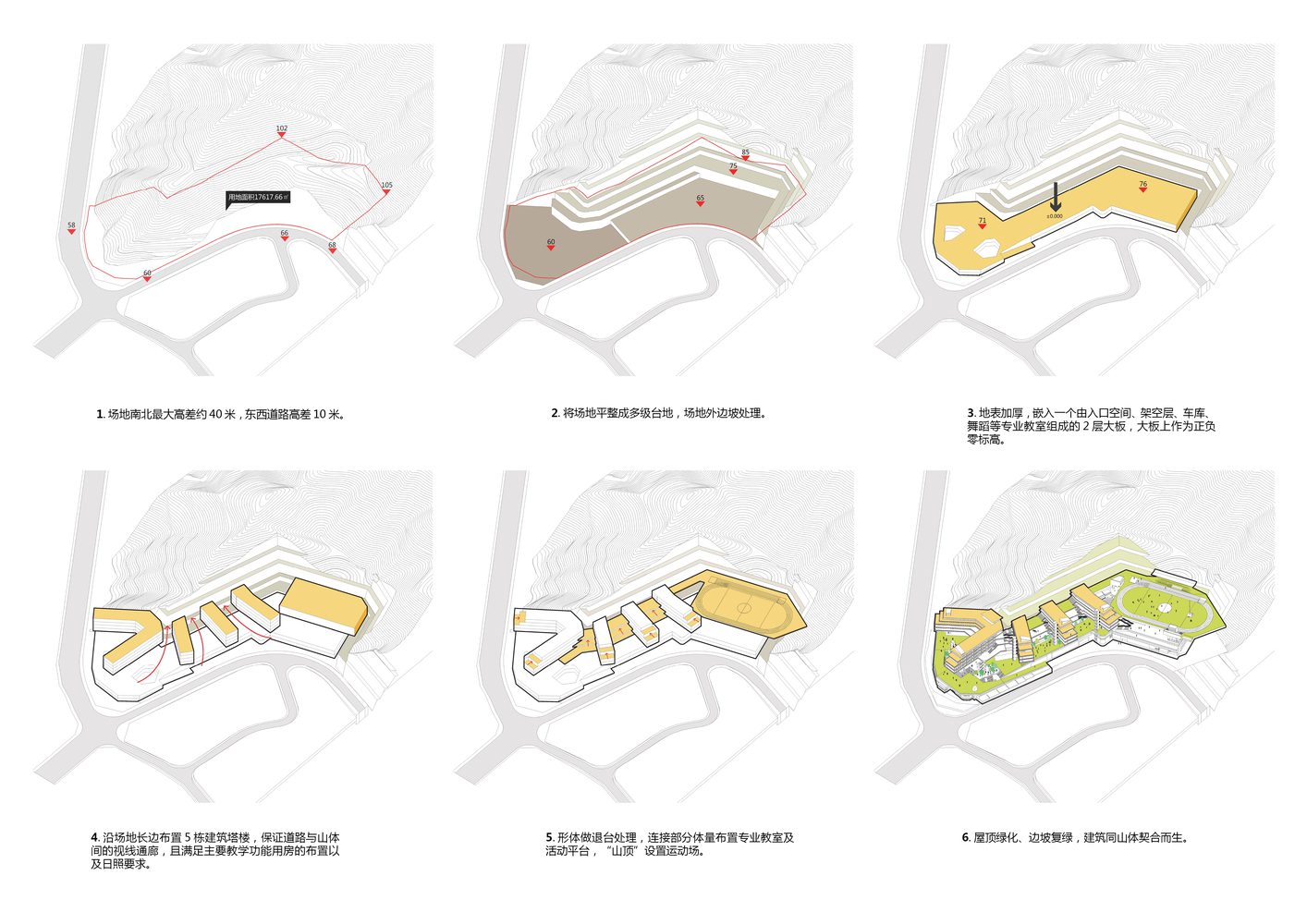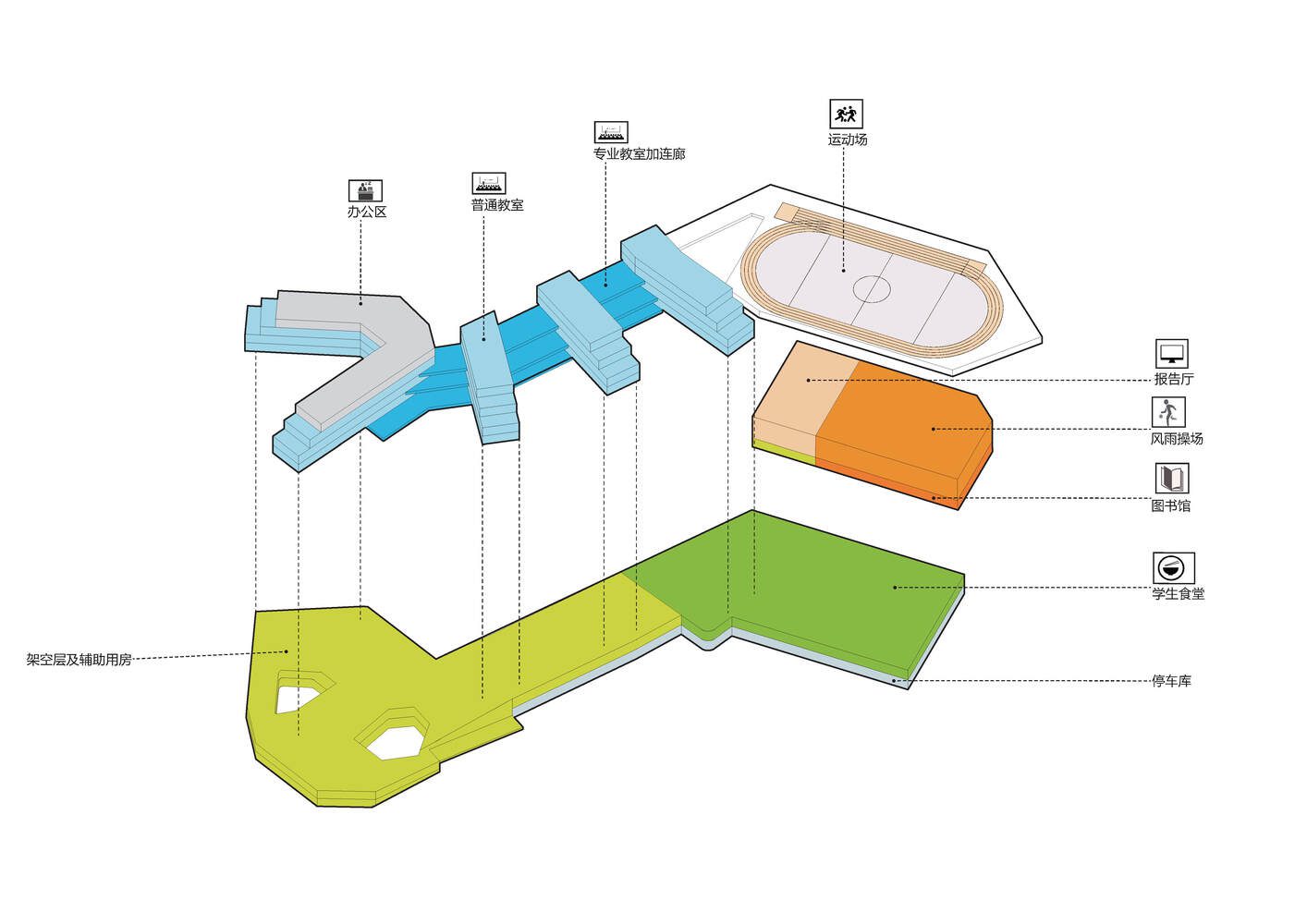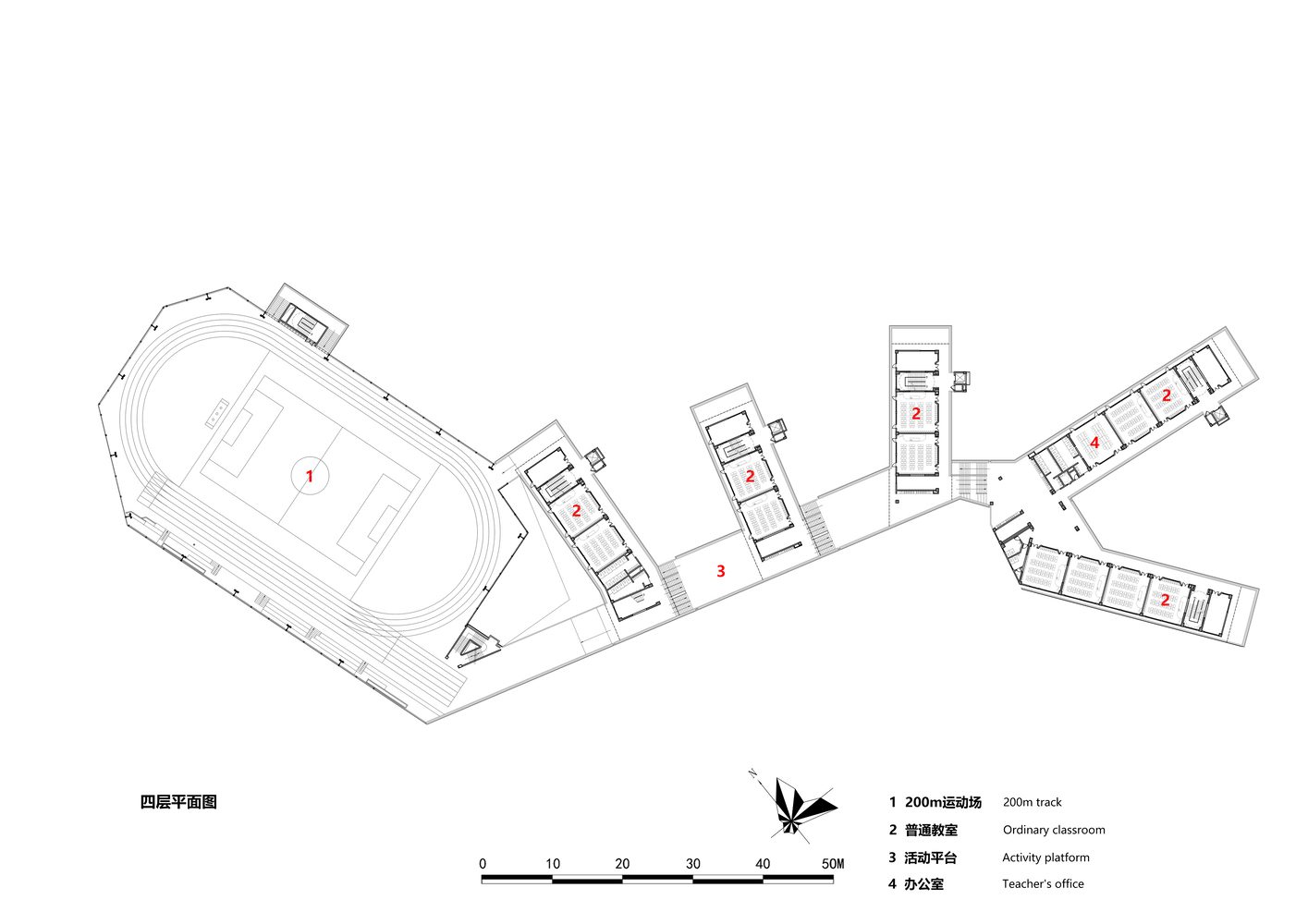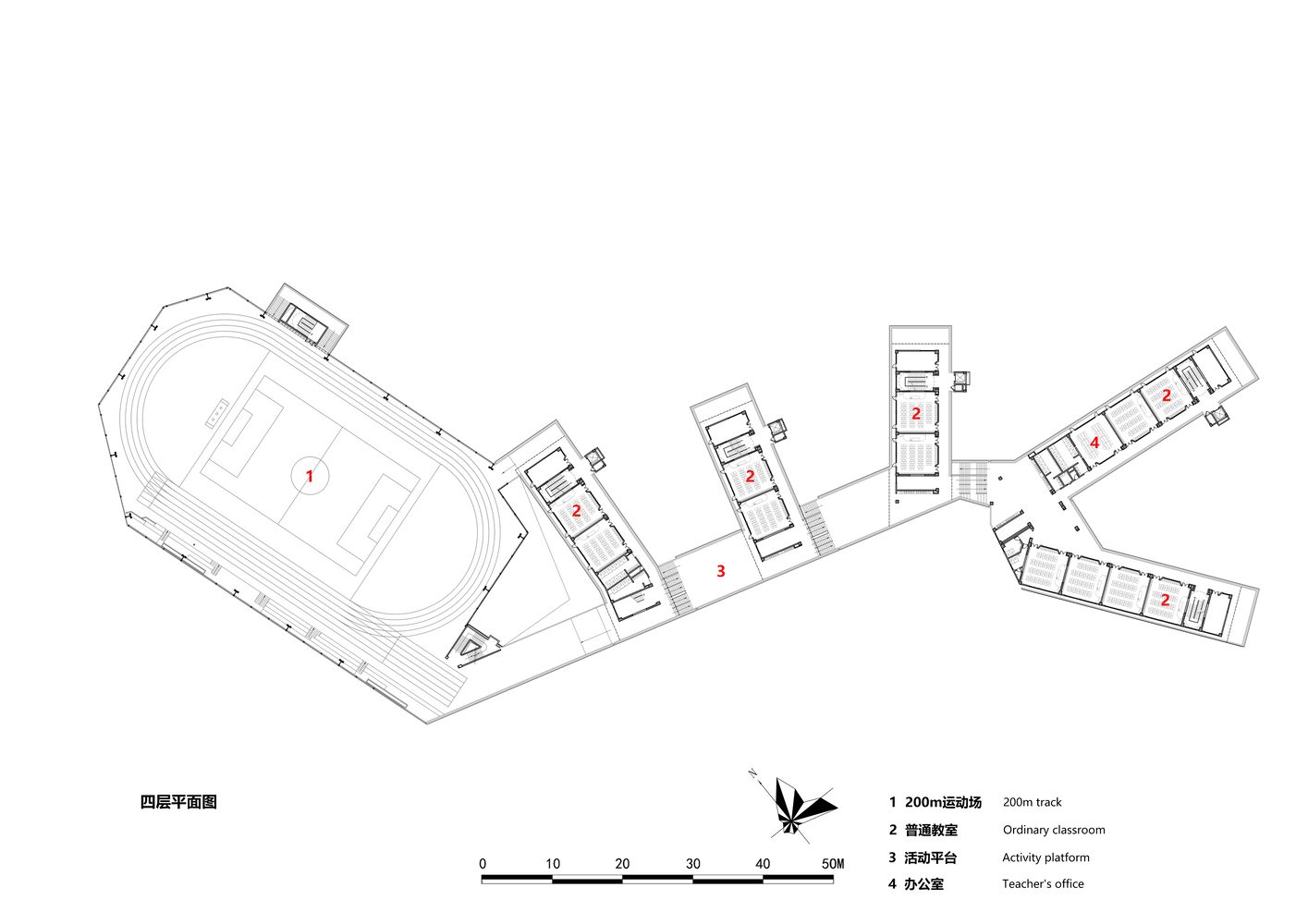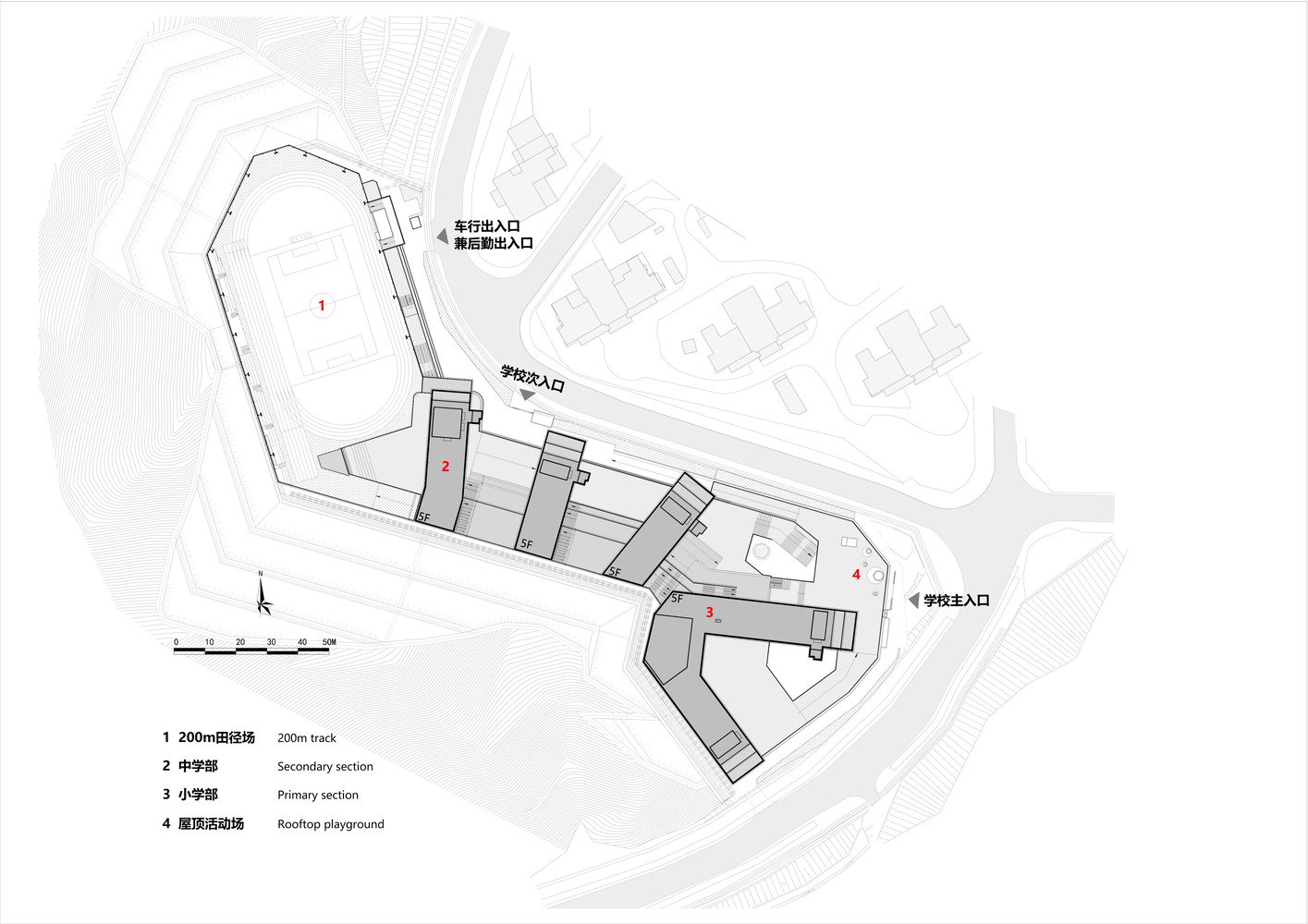When ancient Chinese people designed cities, they began by understanding the soil quality, water regime, celestial display, and feng shui, aiming to harmonize nature with human society and blend the landscape with buildings. This balance between humanity and the environment is the essence of the Qiaoxiang School project. Here, buildings sprout from the earth, seamlessly integrating with the environment, creating a teaching space where students can immerse themselves in nature. Moreover, this project maximizes the use of limited urban land resources. By “thickening” the ground and creating multi-dimensional spaces, it significantly boosts land use efficiency.
Qiaoxiang School of Shenzhen Futian Experimental Education Group (North Campus), originally known as Fulong School, is located on Liantangwei No.1 Road, with Tanglang Mountain as its backdrop. The school takes up 17,617.66 square meters, with a total construction area of 44,249 square meters, accommodating 48 classes and providing nine-year integrated education. Built on a hillside, the school stretches east-west with a maximum height difference of approximately 40 meters. Therefore, the initial phase of the project took two years to complete the excavation and slope protection works to ensure safe and controllable construction.
To preserve the natural surroundings and minimize excavation damage, the project terraces the site into multiple levels. Vertical retaining walls and strategically placed slopes cushion the impact between the terrain and the buildings. The overall plan adapts to the terrain, with set-back slabs running parallel to the contour line and teaching buildings oriented vertically to the contour line. The retaining walls, though man-made, are covered with greenery, blending seamlessly with the mountain. The construction is intentionally understated, allowing it to integrate well with the environment. Horizontal lines on the facade and flower beds add ecological beauty to the building, making it more scenic.
A pathway runs from the main entrance square to the central courtyard for gatherings. Walking along the pathway feels like a tour through a mountain park, passing through seven courtyard spaces at varying heights, which offer students diverse areas for outdoor activities. These courtyards provide unique sightseeing experiences, with each step revealing a different scene. Strolling through the campus, students will be immersed in the magic of nature.
The project aims to create a space for teaching and getting close to nature. The main pedestrian entrance, connected to the municipal road corner, features a spacious pick-up and drop-off plaza with sheltered waiting areas. Ascending through landscaping steps, one reaches the “Mountain Accompanied Courtyards” and elevated activity spaces at different levels. They are set for specialized classrooms and club activity rooms for daily teaching and teacher-student communication. Additionally, landscaping stairs and sightseeing elevators are designed to facilitate access to teaching buildings, rooftops, and sports fields at different elevations.
A large slab space is embedded on the ground floor to accommodate elevated activity areas, parking, and specialized classrooms for music and dance, raising the ground level by 10 meters. The slab space functions as the public activity platform of the campus. It marks the actual ground level and is accessible to fire trucks for firefighting, ensuring safety for the densely located complexes. The five teaching buildings and one comprehensive building on the slab unfold at different elevations, forming a multidimensional and diverse campus built on a mountain.
Through design strategies that integrate with the natural environment and ingeniously utilize the thickened ground floor, Qiaoxiang School, built on a mountain, emerges in the clouds and harmoniously coexists with nature. We hope that this unique environment will inspire learning, spark creativity, and foster exploration among students. Teachers and students can experience the beauty of nature and enjoy the comfort and tranquility of the cloud-top paradise.
Project Info:
-
Architects: CMAD Design Group
- Country: Shenzhen, China
- Area: 44249 m²
- Year: 2023
-
Photographs: Fang Zhou


